Drawing Series #4 – Run
Drawing Series #3 – Tin Heart
Drawing Series #2 – Motion
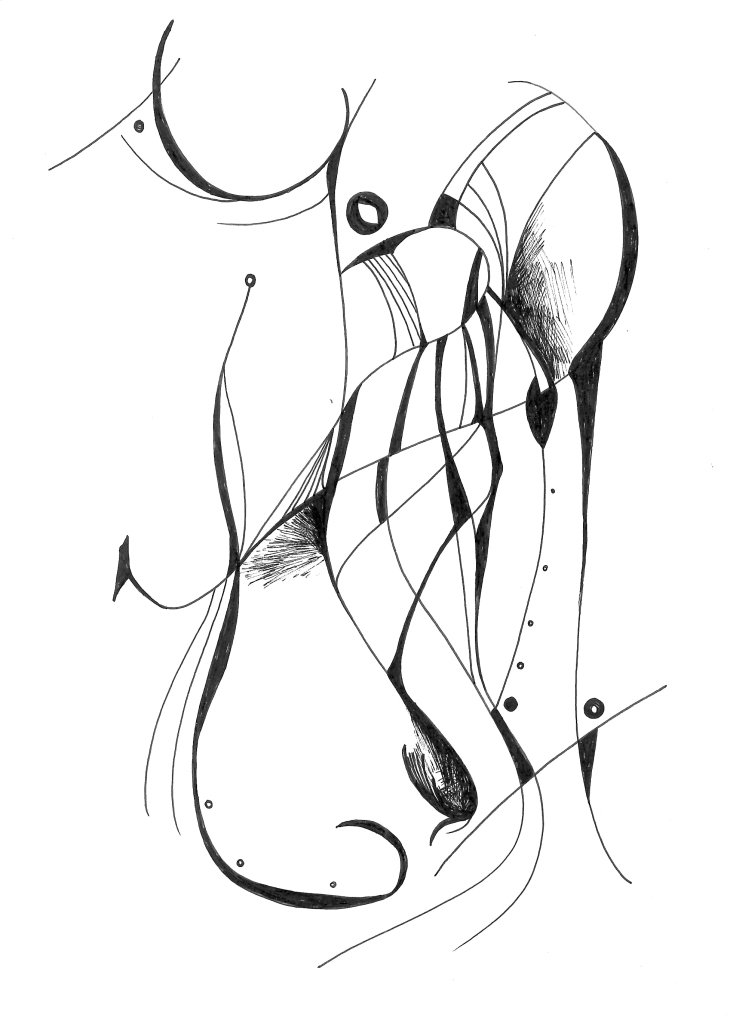
I am documenting a series of drawings I’m doing. I started in 2018 and regularly work on these images which have no initial concept, but begin with instinctive shape and line, then grow and develop through the guidance of my intuition. Interestingly, similar motifs appear and I’m primarily guided by what feels right, as opposed to what I think will look good. In the same way as when you hit a ball or a note on an instrument such as a flute ‘sweetly’ – you can identify that natural moment and how it is the polar opposite of forced and jarring which you may feel at other times. I’m enjoying seeing how these are evolving…
Drawing Series #1 – Deep
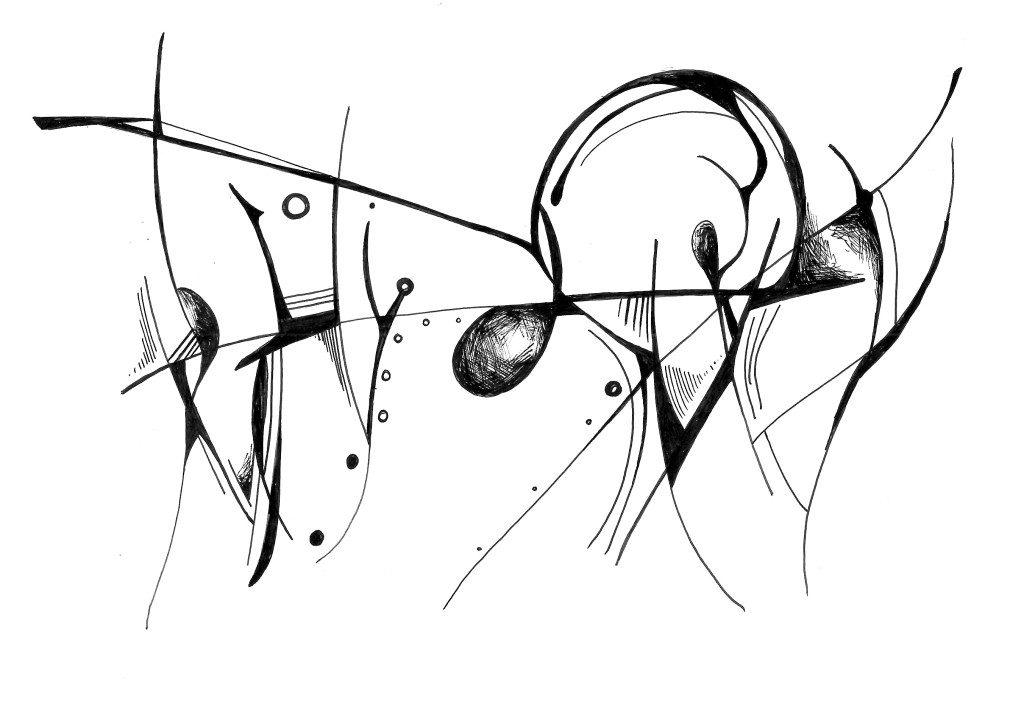
INDIA: Around Odisha in 15 days…Day 3, Tribal Fest & first visit to the City

This morning I intended to get up nice and early so Ashis could teach me proper Indian yoga. He had explained it all to me the night before, but we had yet to have a physical run through. Yoga is best in the early morning, and Ashis is an earlier riser than me – it seems the country is, actually! In the UK it’s usual to sleep until a time the Indians would consider late (7.30/8am), perhaps due to the cold, grey weather making it far less attractive to get out of bed. 8am is usually considered a reasonable time to get up, but 9 or even 10 is perfectly acceptable. Over here the bustle of life outside begins permeating my windows at around 6.30am, but this morning I had to go back to sleep, a situation I blame entirely on the mosquitos who had kept me awake half the night buzzing my ear. I have been bitten alive by mosquitos since I arrived. I knew it would happen, the gnats at home cover me in bites each summer. I must have tasty blood. The mosquitos have delighted in a fresh blood bank to drink from and have taken a liking to my forehead of all places. Around 10 bites now cover my face, with more on my feet, arms etc. I’ve become paranoid about getting bitten even more, so during the night when I heard that ominous bzzzzz in my ear, I awoke ready for battle. But they are extremely crafty, and being small and almost transparent, camouflage against almost everything. I spent an hour trying to catch it, then gave up and went back to bed. As soon as I turned the light off and laid down my head – bzzzzzz in my ear. They’re trying to drive me mad, I thought – and succeeding. I imagined I could see them smirking as they teased me incessantly, knowing they had the advantage against my comparatively sluggish attempts to quash them.
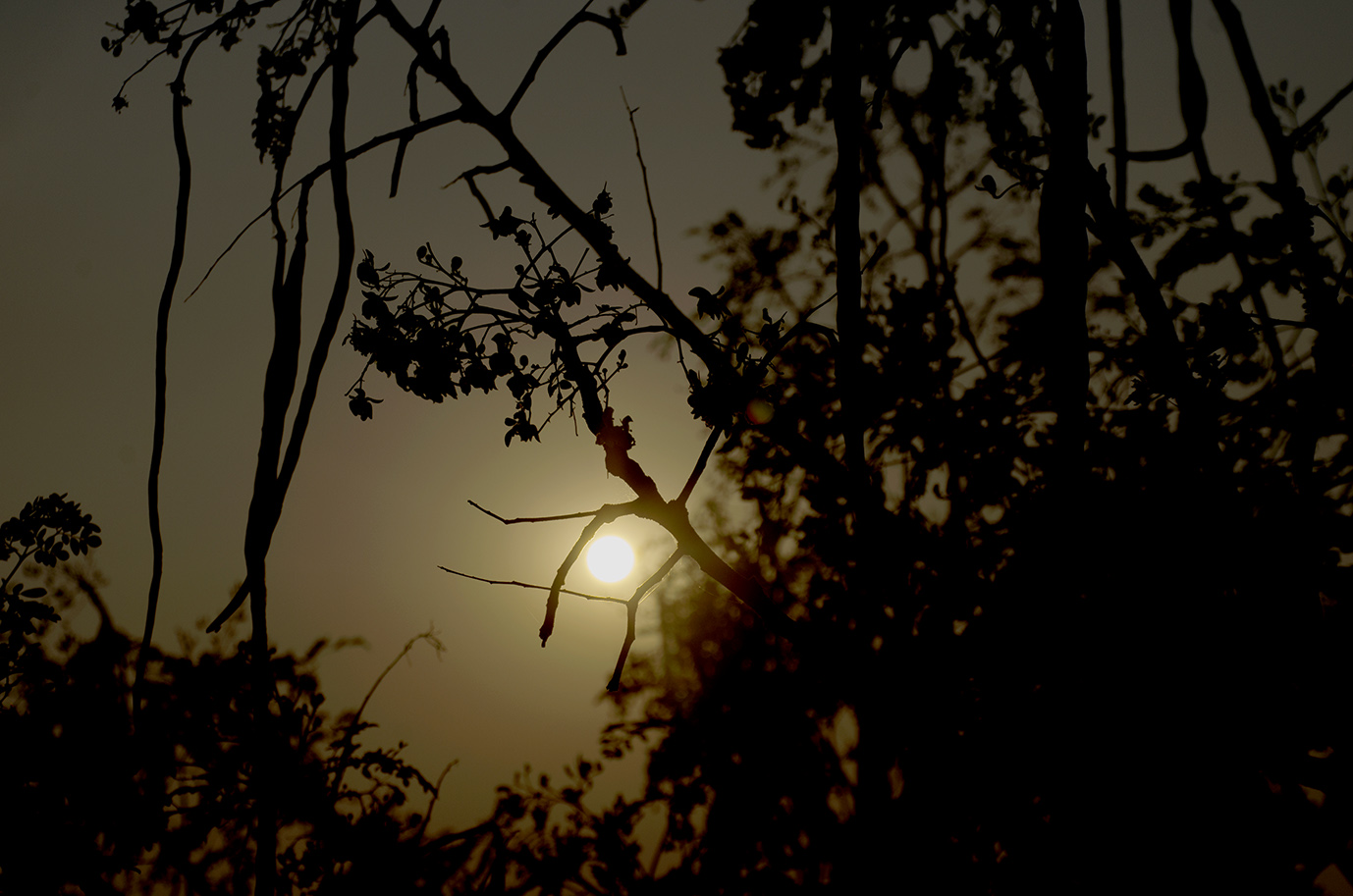
So, tired and grumpy, I postponed yoga until tomorrow. Ashis went out and brought back breakfast from a local street stall – a thin red liquid curry sauce, with steamed white dumplings called Idli. They are fluffy and fairly bland, so you dip them in the curry sauce. The sauce (Ghuguni) is packed with flavour and perfect with the Idli, but almost surpassed my meagre spice limit! I had to eat it very slowly in between gulps of water and hope that my stomach didn’t complain later…
After breakfast I went to get dressed, deciding to up my game a bit after visiting the slums and seeing how beautifully dressed the women are, with their jewellery and brightly coloured saris. My plain face and clothes looked drab in comparison, so on went some jewellery and a little make up to hide my spotty face.
As I went to open the window and let some of the beautiful warm Indian breeze into the room, I came face to face with a lizard. Now, not being a regular traveller, this was somewhat of a shock to my system. A mini dinosaur…in my room…with me…all night… I told Ashis, who replied oh yes, we call them Laxmi. They eat the bugs and spiders, they won’t come near you. Also, if you are saying something and you hear them make their clicking noise, it means you are speaking the truth. Hmm, OK, I replied, smiling hesitantly. After returning to my room and re-introducing myself to what appeared to be my unexpected new roommate, I decided I would call him Brian. My dad was called Brian and passed away 3 years ago. I have felt a strong sense of him with me on this trip, particularly as he was from the west indies, and many of the cultural elements cross over with his and my uncle’s colloquialisms from growing up there. So, me and Brian are now on great terms, I chat to him and say hi when I come in and he is less inclined to run away from me now he realises I’m friend not foe.
I spent my day making some paintings, editing my photos and writing the blog. I also managed to get in some meditating and reading, what bliss! I will do a post specifically on the art I have made here after the diary entries, but if you visit my Instagram page / kate.withstandley you can see most of the work on there in the meantime.
At about 5pm we ventured out in a cab to the Tribal Festival, my first visit to the city! What craziness. I cannot imagine what the bigger cities are like – Mumbai, Delhi etc. I am struggling to envisage anything crazier than Bhubaneswar, although I know this is in fact tame in comparison to cities like Mumbai, with their populations of 30million+. I was skittish as we crossed the road, hesitating, then jumping back as vehicles of all kinds rushed past. Ashis just stepped out and crossed, with the vehicles swerving round him or slowing to let him go. They beeped, but then everyone beeps, for every reason, so it’s hard to know if he was doing something wrong, or not. When I found it impossible to follow – all my instincts telling me not to walk out in front of fast-moving vehicles – he came back and took my hand to lead me over. I felt a bit silly but reminded myself this is only my 3rd day in India – I need some time to adapt!
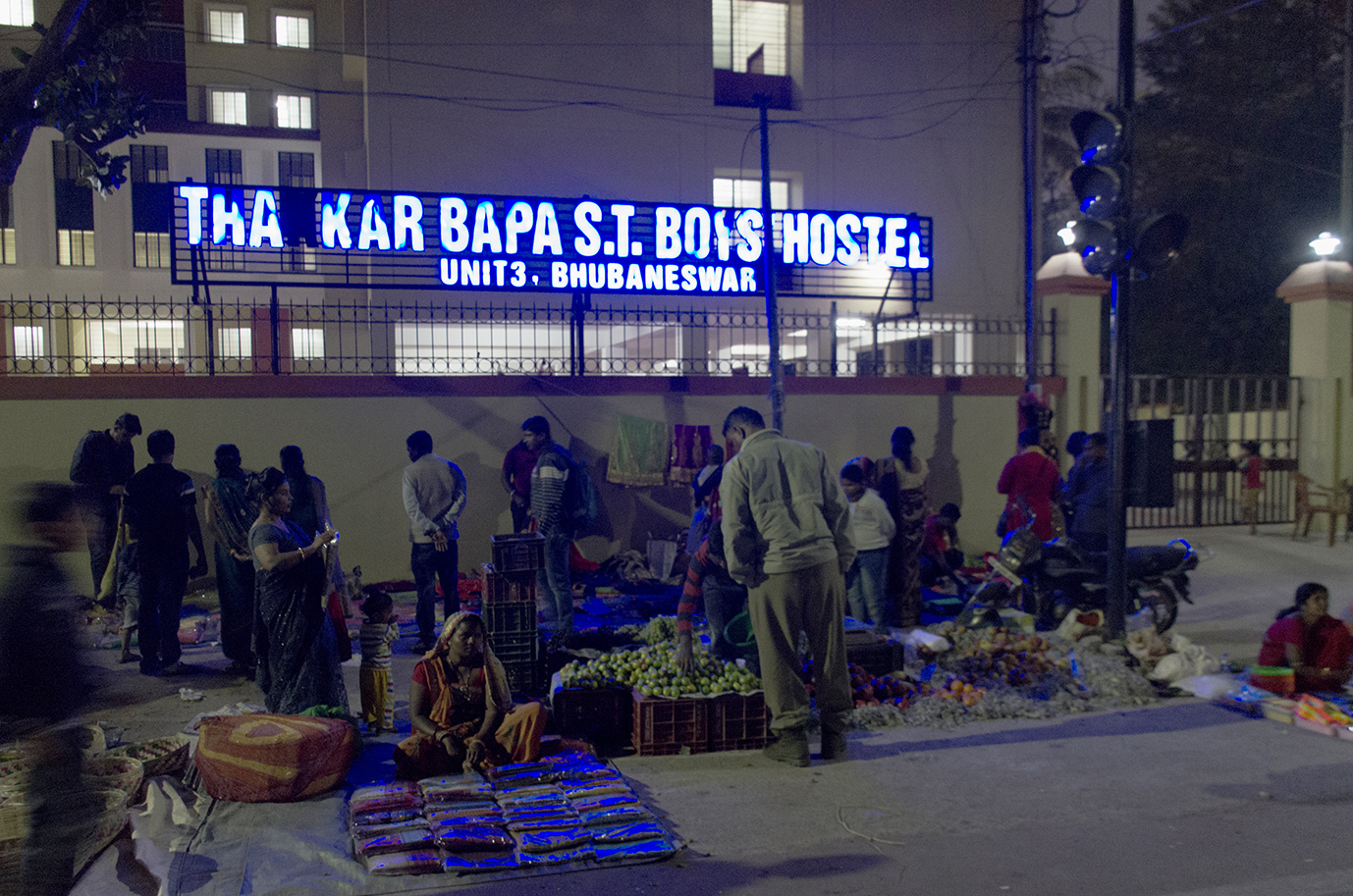
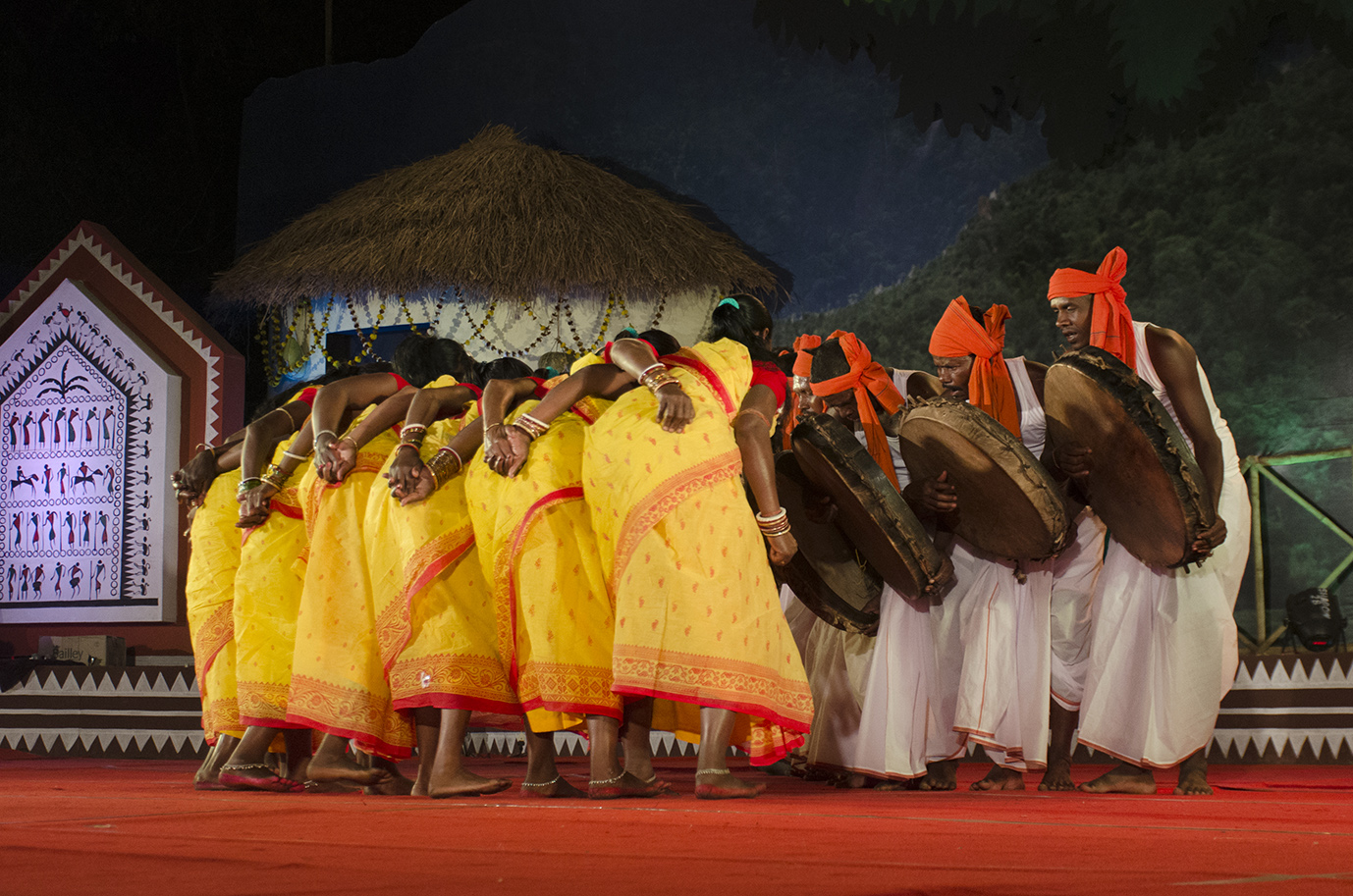
The Tribal Festival was fascinating – there are 63 active tribes in Odisha alone. These tribes still follow the same lifestyle and traditions which they have done for thousands of years. There are modern additions, obviously, but the generations pass down the skills and cultural structures of each tribe and these continue to be preserved in the younger generation. Some are more advanced than others, while some still subscribe to a wonderfully simple lifestyle, relying on agriculture and growing their own crops. Almost all still make their own clothes, jewellery, and various living implements, from bamboo and other materials which grow nearby. At the fair each tribe has created a mock up of their style of house and there are clearly significant differences in culture, architecture and style depending on the tribe and the region in which they are based.
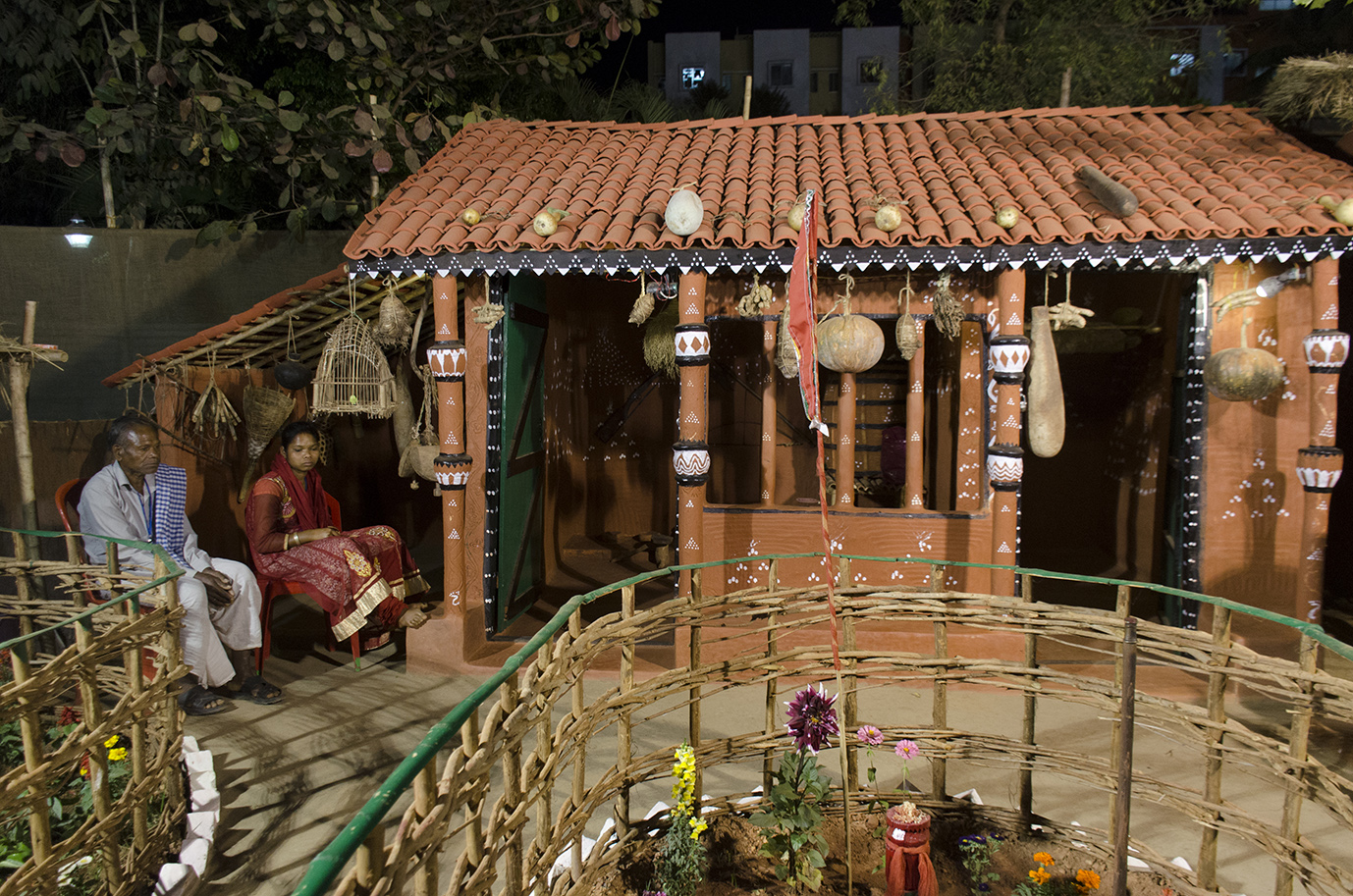
A large stage sat in the centre of the festival, on which groups of dancers from each tribe performed their ritual dances in stunning outfits and with delight. The dances were spectacular and hypnotic, their drums and chants causing time to slip away as you become absorbed. Watching is difficult though, as the urge to dance is infectious; the rhythm is universal and primal, speaking to something deep inside you which was lost a long time ago. A connection to the earth and to each other which we in the West abandoned generations before now.
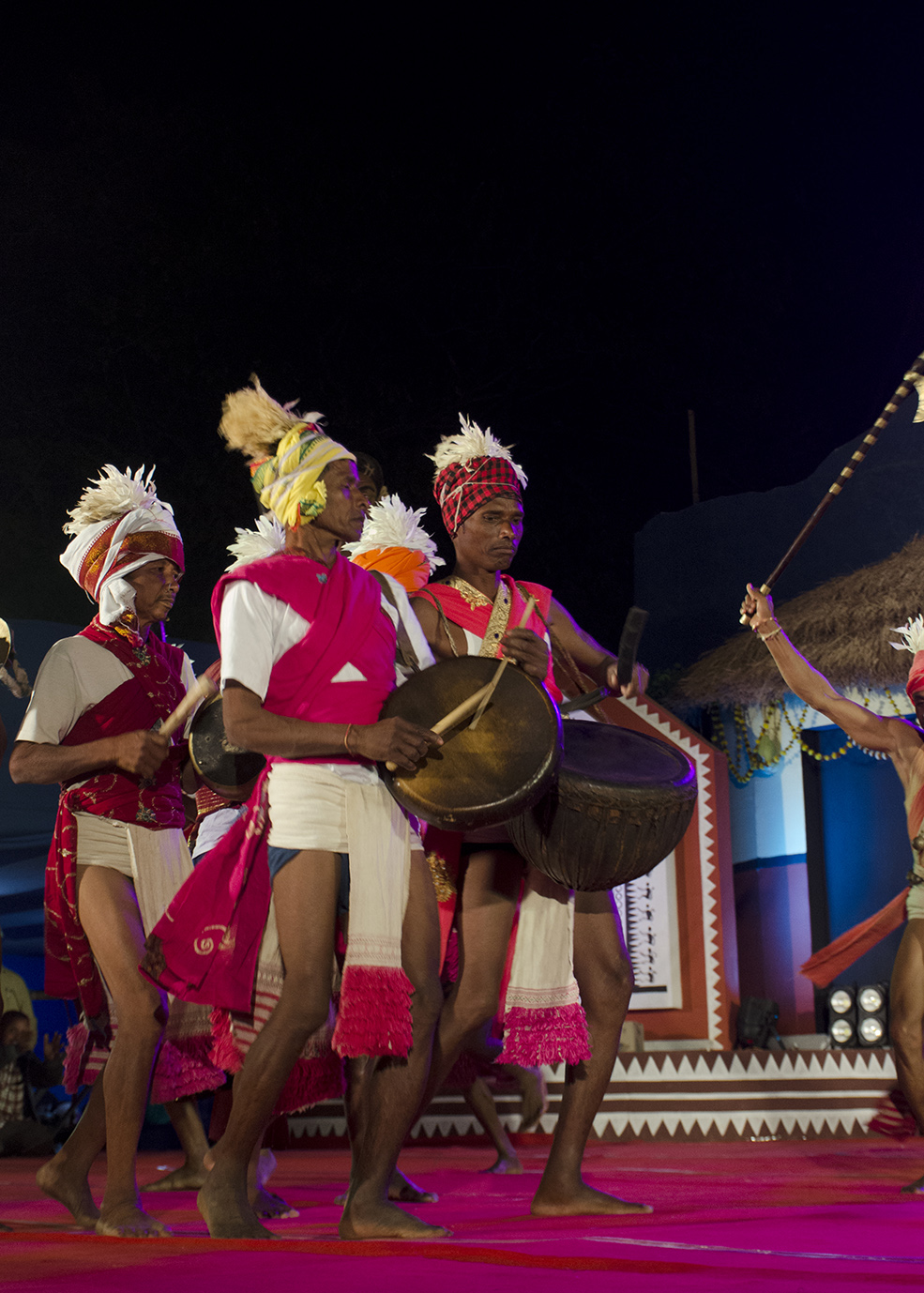
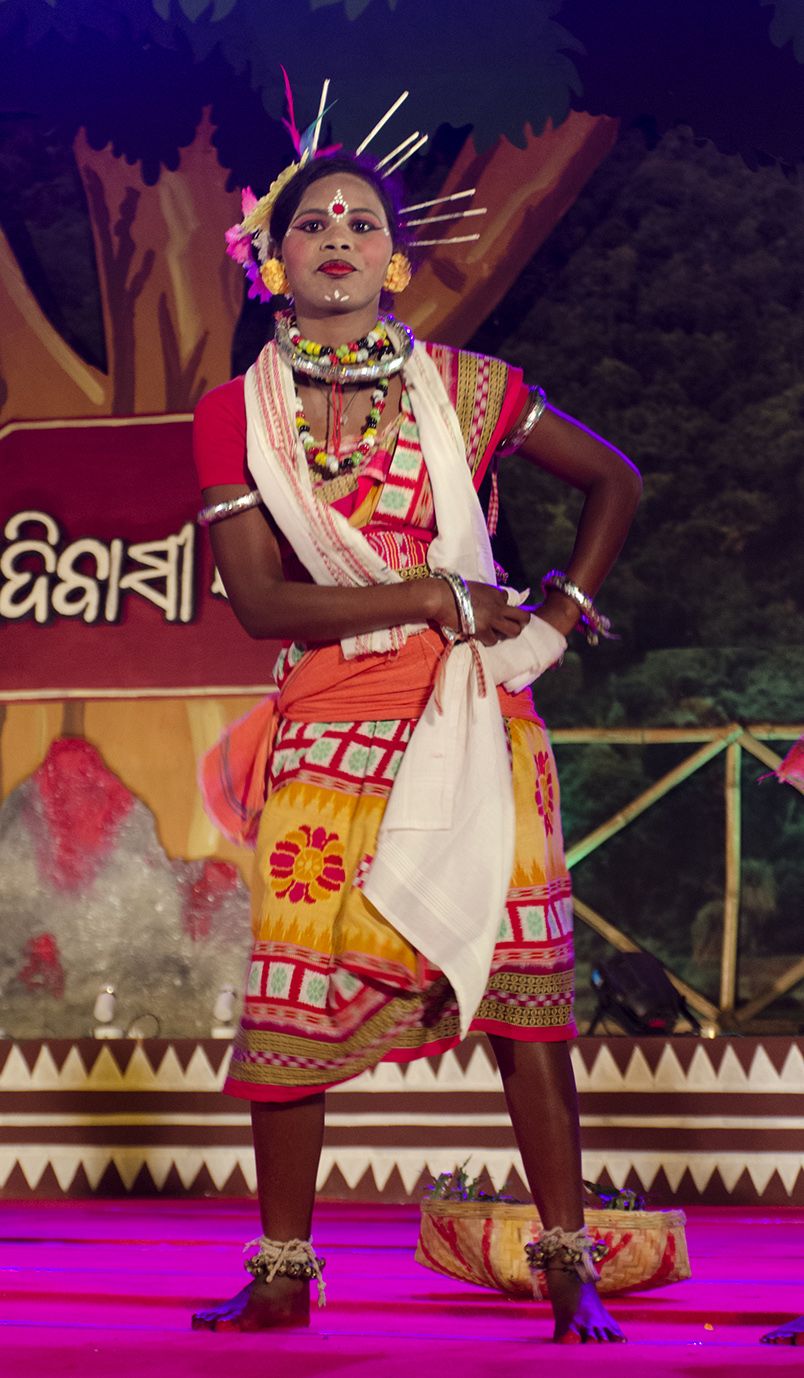

We dragged ourselves away from the dancing and went to explore the stalls. I hadn’t intended on buying much, this trip was mainly about art and experience, not shopping, but with the products on offer so beautiful and handmade (and of course cheap) I just couldn’t resist. I stopped looking at the jewellery stalls after a while, or I would have bought far too much! We happened upon a stall where they were selling tribal flutes. Being a (very amateur) flautist myself, I was drawn to these and Ashis asked the man to demonstrate. The construction of the flute was at once simple and complex, a piece of wood with holes, connected to a round wooden bung at the end with a piece of string around the metal mouthpiece. It seemed as though the bung had to be wet, and the string perfectly placed in proximity to the mouth and the metal, to be able to produce a sound. The sound itself was halfway between flute and trumpet, piercing in volume and epitomising the sound of the East. Ashis tried numerous times and finally succeeded in producing a sound, but his attempts to bargain with the man on price were in vain – mainly because of my presence, but also because it was clear he really liked it and being a local, he wasn’t prepared to pay over the odds, as I would have been. Next came a stall with stunning reed mats of all types, sizes, colours and shapes. I spotted a yoga mat with matching carry bag, but when they said 600 rupees I baulked. Until now everything had been 100/200, and I politely said no. It wasn’t until later when I got home and worked out the conversion that I realised this was about £6.50, and I kicked myself for not buying that beautiful mat.
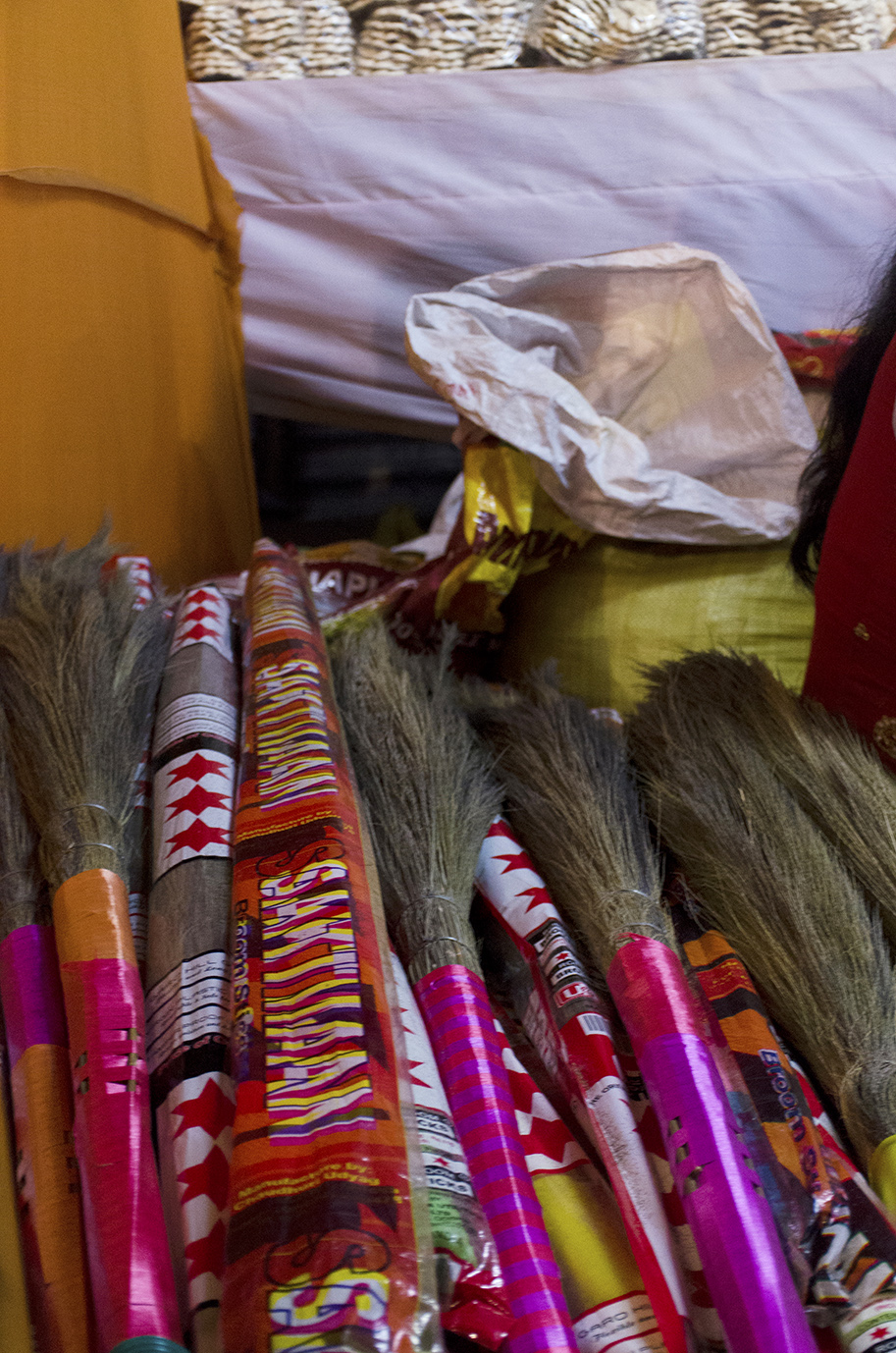
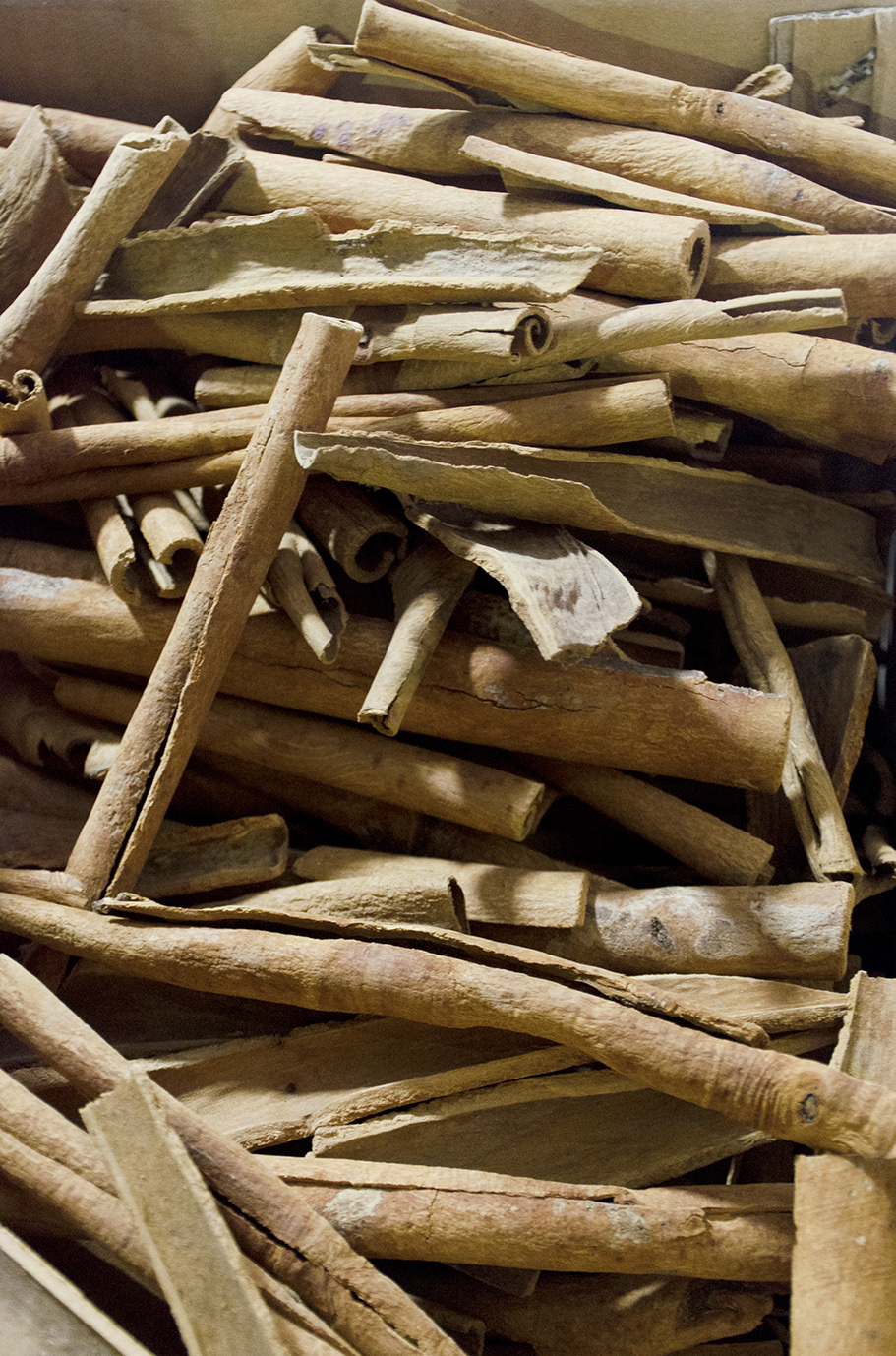
On the way back, we stopped at a kiosk to try some freshly made juice. As we waited, I became distracted by what appeared to be an Indian soap opera. At first it seemed completely over the top, similar to American soap operas, with long dramatic pauses focusing on someone’s stricken face, then as I continued to watch it became increasingly dramatic, concluding with a woman drenching herself in cold water in some sort of penance for something, while her daughter watched and sobbed. I became completely absorbed in trying to decipher what was going on and interestingly was still able to be drawn by the TV show, despite the vast gap in language and culture. Along came my pineapple juice, which was delicious, but I was then asked if I wanted ‘salt’. I instinctively said no, but Ashis thought I should try it as it is generally what Indians add to their sweet drinks such as juice and Lassi (yohgurt drink). What he added was not normal salt, but some very strange addition which did not work for me at all. Next time, no salt.
Tomorrow we are off to see the Jaina Khandagiri Caves…
INDIA; Around Odisha in 15 days… Day 2, meeting the community
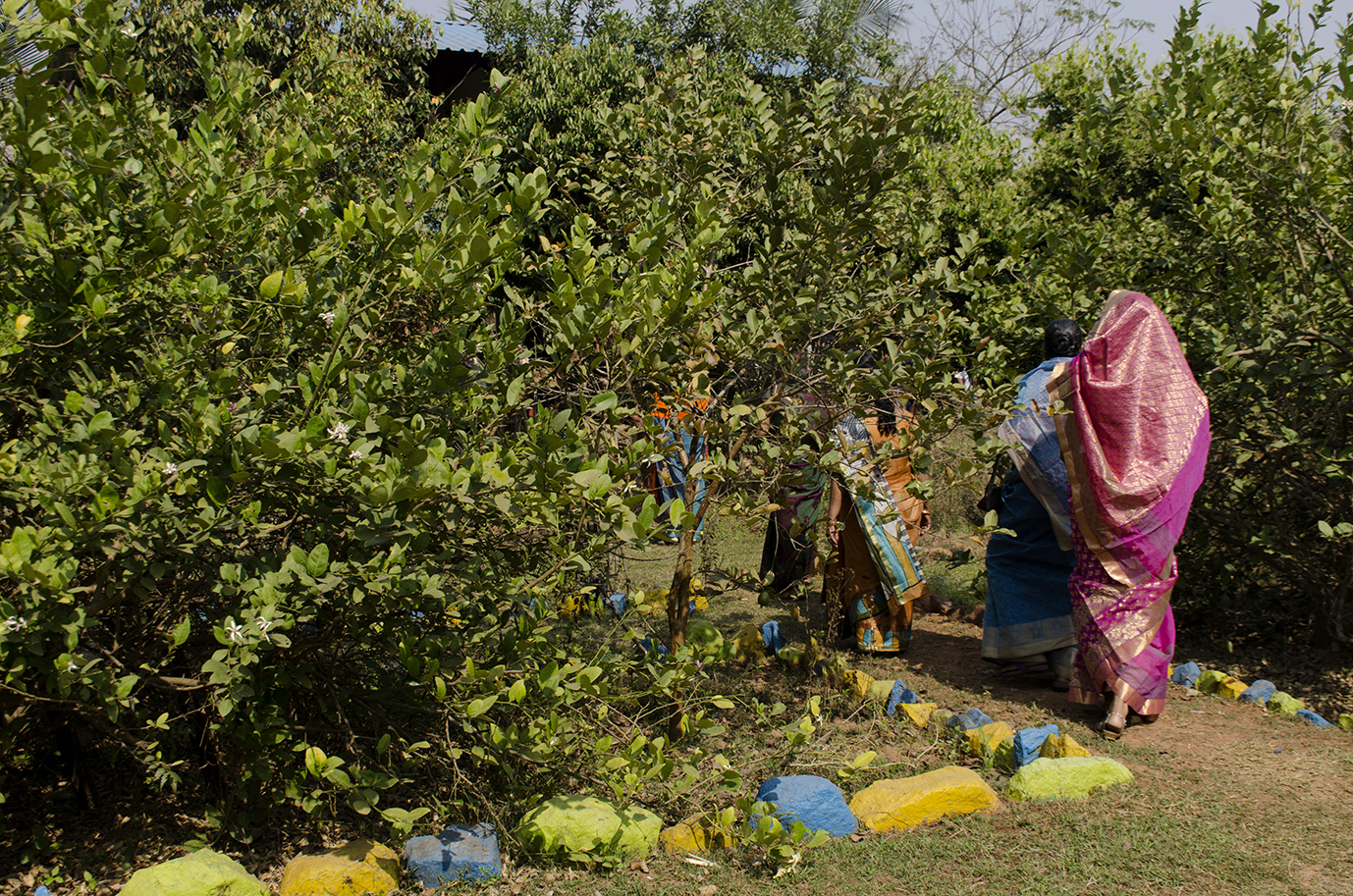
My second day in India began with a beautiful breakfast of pasta, potato and cumin soup, with cucumber and tomato on the side. It was at once delicate and packed with flavour, and testament to Ashis’s cooking prowess. It was also exactly what I needed, having just about seen the jetlag off and suddenly very ready for some food in my belly.
After breakfast we sat in the studio/communal area and had an interesting discussion where we shared our thoughts on what makes an artist and the nature of art. Ashis shared with me some of his background and experience in art, he is exceptionally knowledgeable and has spent years cultivating a wide-ranging artistic background in fields ranging from animation (where he ran his own studio) to setting up the first art gallery in Hydrabad, teaching art and much more. He is currently working on developing the Bhubaneswar residency into a gallery/art centre and has big plans in the pipeline. His goal, he explained, is to make India a global leader in art. The irony being that there is so much art already being produced in India, however until now it has not yet been coherently linked to create a recognisable movement. Ashis wants to change this and believes strongly that art can create a common bond not only within India but internationally. Through art and culture, sharing and experiencing, we can all grow and build a community of artists. He is clearly a determined, passionate person with knowledge, talent and drive – if anyone can do it, I believe he can! His philosophy resonated with me, as it encompasses the same vision with which I and others set up the Dartford Arts Network (DAN). Our goal was smaller, with focus on the local area and bringing artists together to create a community which can work together to drive creativity and artistic progression, but the principle is the same. Another commonality we share is the resolve to enlighten people to the fact that everyone is an artist and has a creative soul. It is inherent in our very being, no matter who you are. One of my primary objectives for DAN is to find a way to draw the artist out of non-artistic people, particularly adults. Children have no problem being artists, they have not yet lost their self-belief, a wonderful by-product of their innocent state. Adults on the other hand, regularly claim ‘I can’t do art’. Their fear of being ‘bad’ at it overwhelming any instinct to try. This is something I feel strongly needs to change in society and is a battle I personally intend to try to fight in my own way with DAN.
Following this stimulating discussion, we were visited by a local art student, Laxminarayan, who brought some of his work to show Ashis. Beautiful watercolours depicting the local caves included some delicate figures silhouetted against the sky, and clever, gentle highlighting gave the setting sun’s rays a voice of their own in the works. There were also some evocative pencil sketches, and an intriguing abstract work, which he explained was inspired by what it must be like to be a blind person, in a life without colour. He was motivated to paint this following a visit to a local blind school, where he met with students and felt moved by their experience. His work was very interesting, and Ashis gave him some pointers on colour technique, which I found thought-provoking too. Laxminarayan explained how Ashis is very well respected in his field – he is a great artist, he said, to which I agreed.
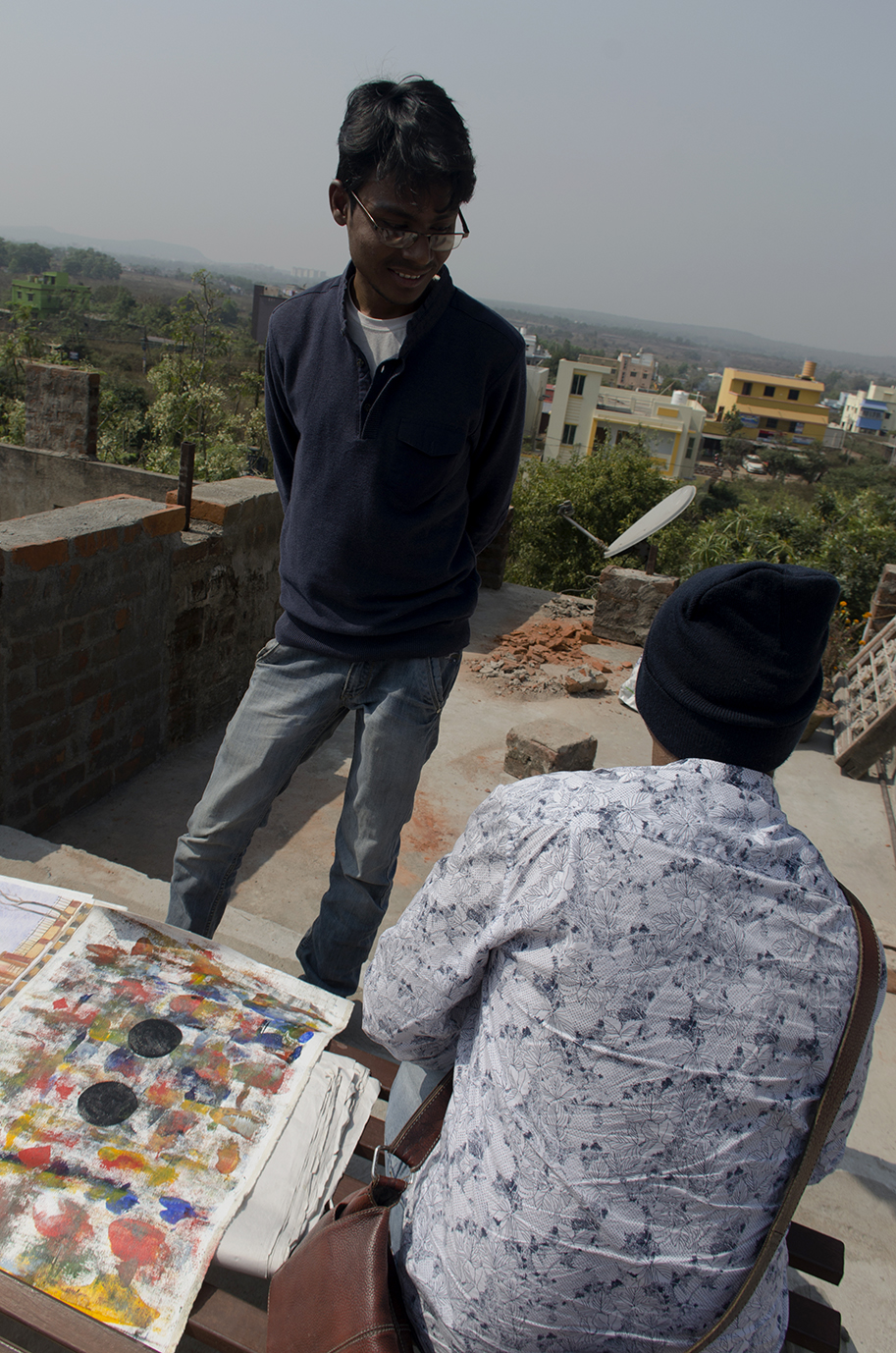
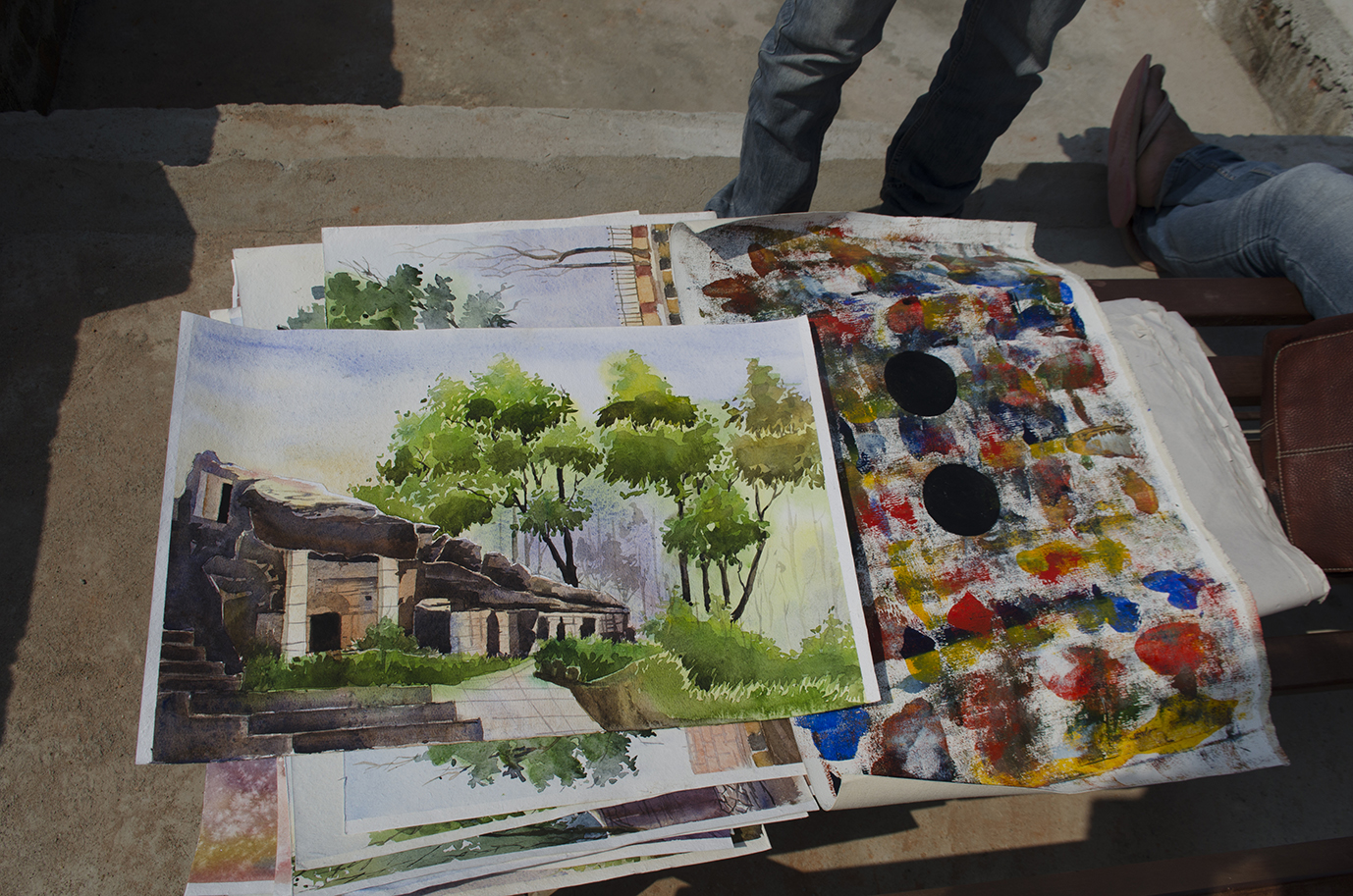
After this, we headed off to a community picnic for the residents of the local area – GA Colony. We got a lift with a neighbour and friend of Ashis’s family, and I had to remind myself of the freedom in India, as I instinctively reached for my seatbelt in vain. 3km or so down the road, we arrived at a large farmhouse with beautiful grounds. I got many double takes and was clearly a local novelty, but everyone was extremely friendly and hospitable, asking where I come from and even inviting me to the city’s rotary club meeting! Sadly, as I am not a rotary member I had to decline. The ‘picnic’ was being held in the gardens, with the food being prepared in huge outdoor pots on stoves for about 40 guests. As we waited for the food to be cooked, Ashis took me around the garden and pointed out the many different types of tree growing there. A stark contrast to our gardens, of course, there were lemon, guava and cinnamon, and many more of which I have forgotten most (forgive my poor brain, it is rather in a state of information overload). A group of women arrived and formed a beautiful sight, meandering through the fruit trees in their striking, vividly coloured saris. Food was served – a variety of dishes on one plate, including daal, rice, a selection of curries, chutney, and a mutton curry in a separate pot. Being my first experience of mutton, I was intrigued and apprehensive, but after one taste, it was all I could do to give a quick thumbs up before I shovelled more into my mouth. It was genuinely one of the best dishes I have ever tasted, with the meat so tender it fell apart gracefully as it hit my tongue, while the rich sauce awoke every single one of my tastebuds. After the main meal came a small pot of sweet dessert which tasted much like rice pudding and was utterly delicious. The leftover food and paper plates were tossed in a pile for the dogs to finish off and with my stomach still being a bit unsettled after the jetlag, the dogs were delighted with my decent offerings!

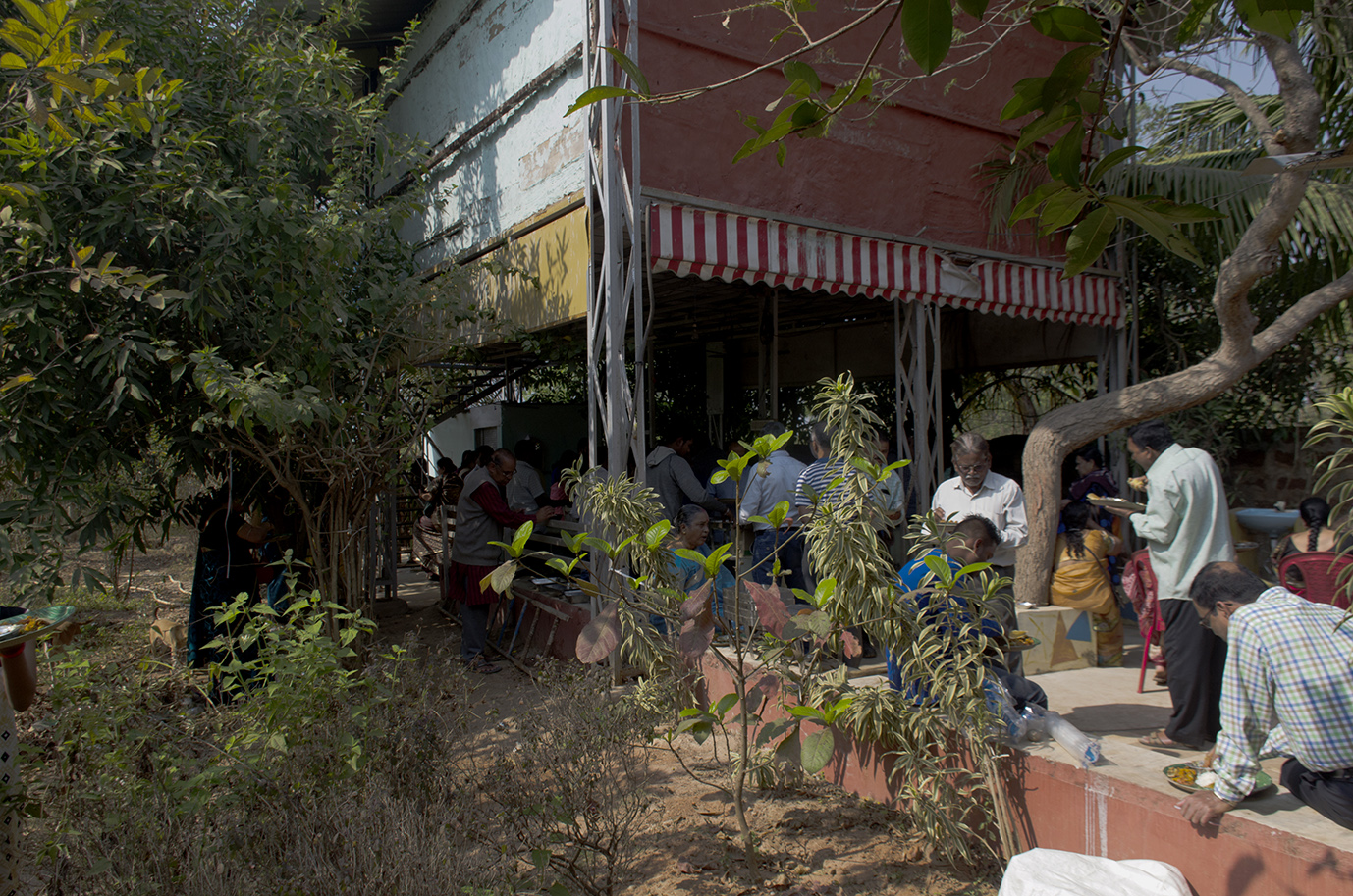
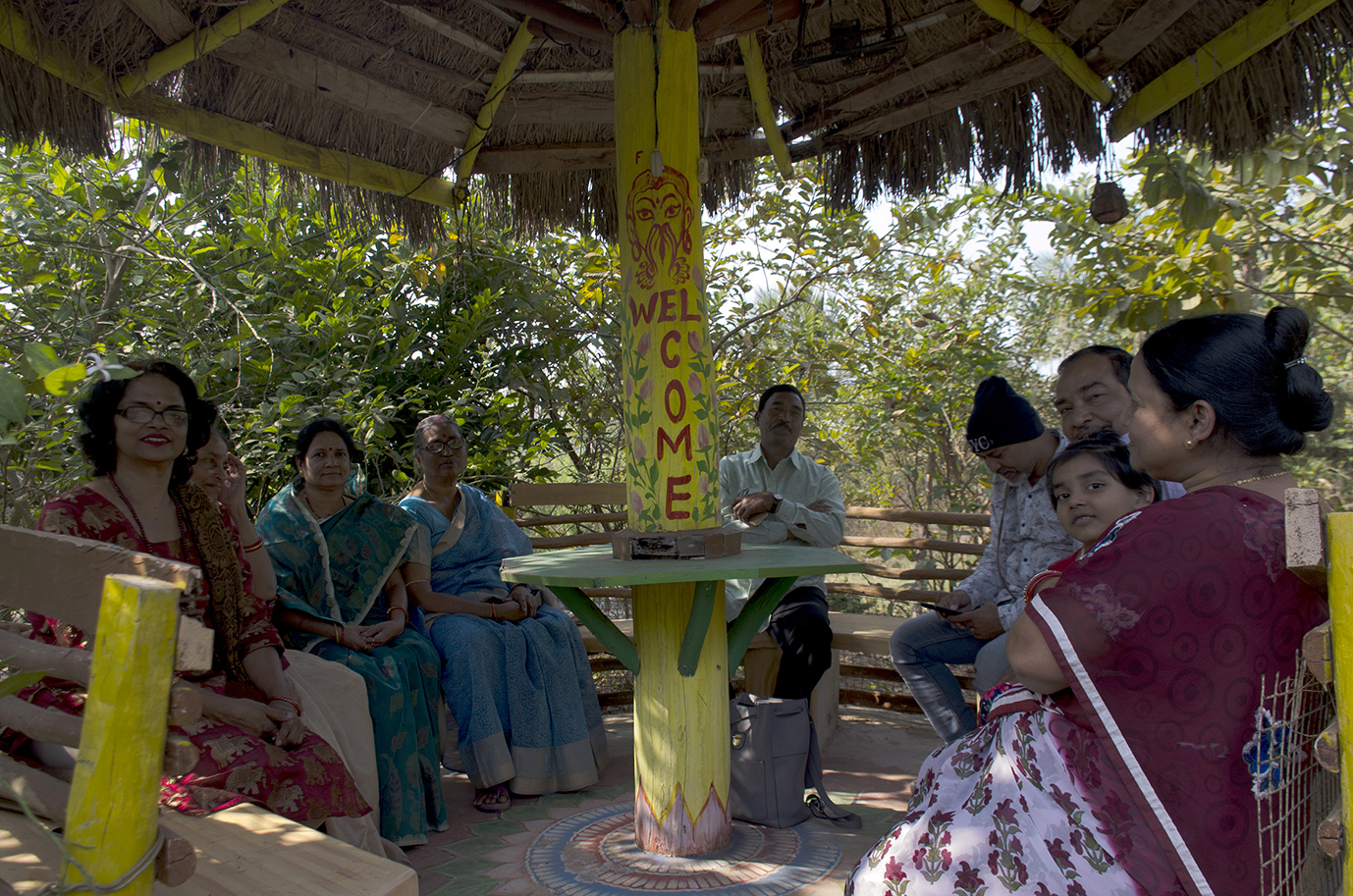
After meeting some of Ashis’s friends and family, we set off back to the house on the scooter. I was nervous, as this was my first time on a scooter and no helmets in India, obviously (although I have seen a few signs since then saying ‘better safe than sorry, wear a helmet’ – which made me laugh as I may have seen 1 person wearing a helmet in nearly 2 weeks) but didn’t have time to worry as we were off, me riding a gracefully 19th century side-saddle style, due to wearing a dress. My worries soon faded though as we set off, the warm wind flowing over my face and head, smells of every kind ebbing and flowing as we passed street stalls, cows, groups of dogs and houses. I felt at that moment that I would probably feel I had lived more in India in 2 weeks than a lifetime in England. The whole place just feels like LIFE. It’s a cliché and a simplistic explanation, but it truly cannot be expressed in words. It is a combination of sight, smell, sound, every sense you can feel. India opens them all up, like the lotus flower, you suddenly feel as if you are awake. Oh, so this is life. While many places in the West supress the experience of living, for various socio-political reasons developed over generations, India expresses it with vivacity.

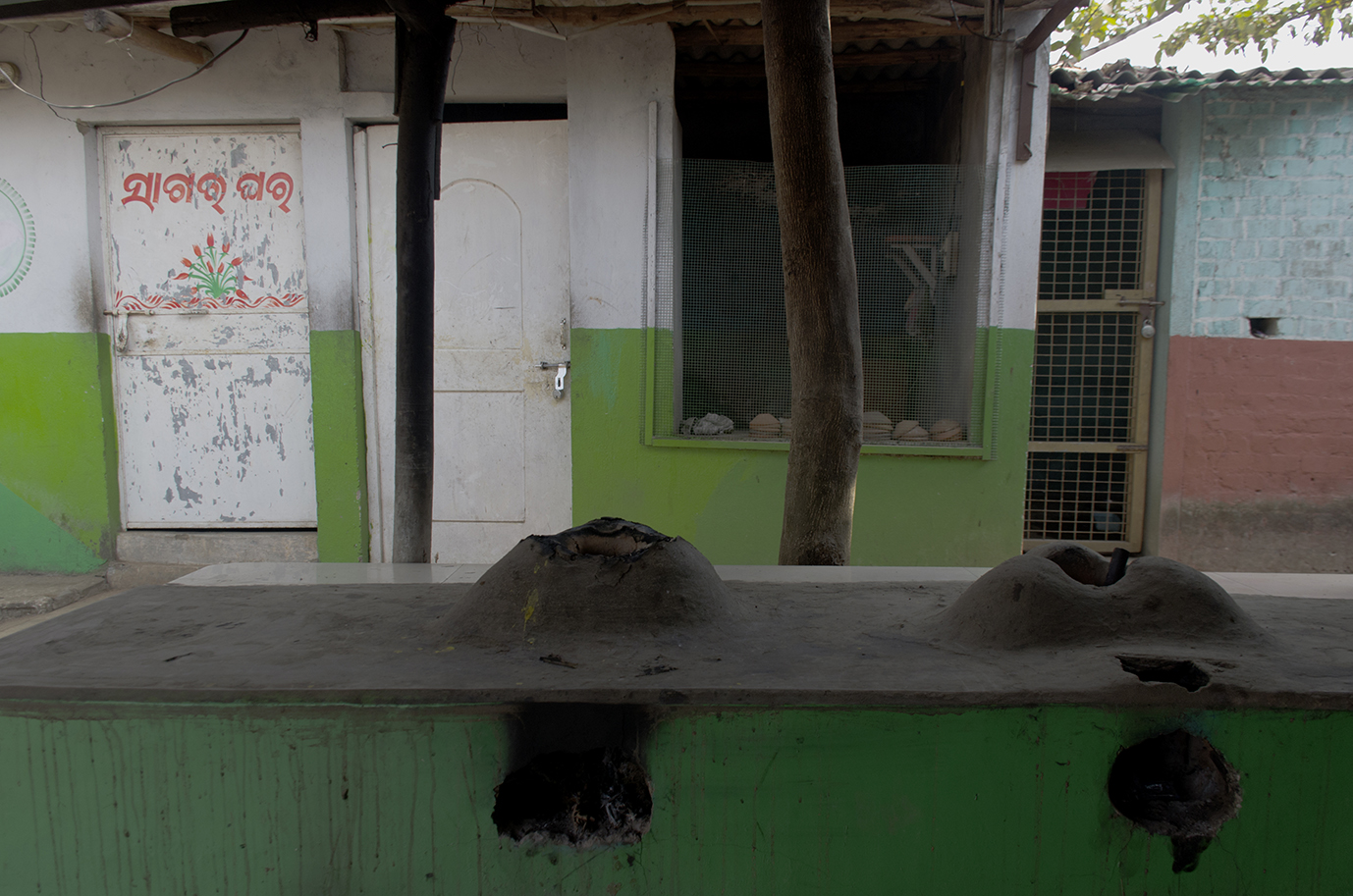
On our return to the house I had a little nap to indulge the jetlag before a 40minute meditation, which reached deeply enough to make me feel almost asleep, but not quite. I felt extremely relaxed afterwards and instantly made an abstract sketch, which looked very different to my previous work. Day 2 and my work is being influenced by India already, I thought.
Dinner was Chapati and vegetable curry made by Ashis’ mum. It was astounding and is so far beyond the Indian food I have had from takeaway restaurants at home, that I fear I may never enjoy UK curries again! After dinner we set my programme for the week, a packed schedule full of culture and exciting trips, before a final few days working on my art using my experiences as inspiration. Tomorrow is the Tribal Museum and my first trip into the City proper…very exciting…
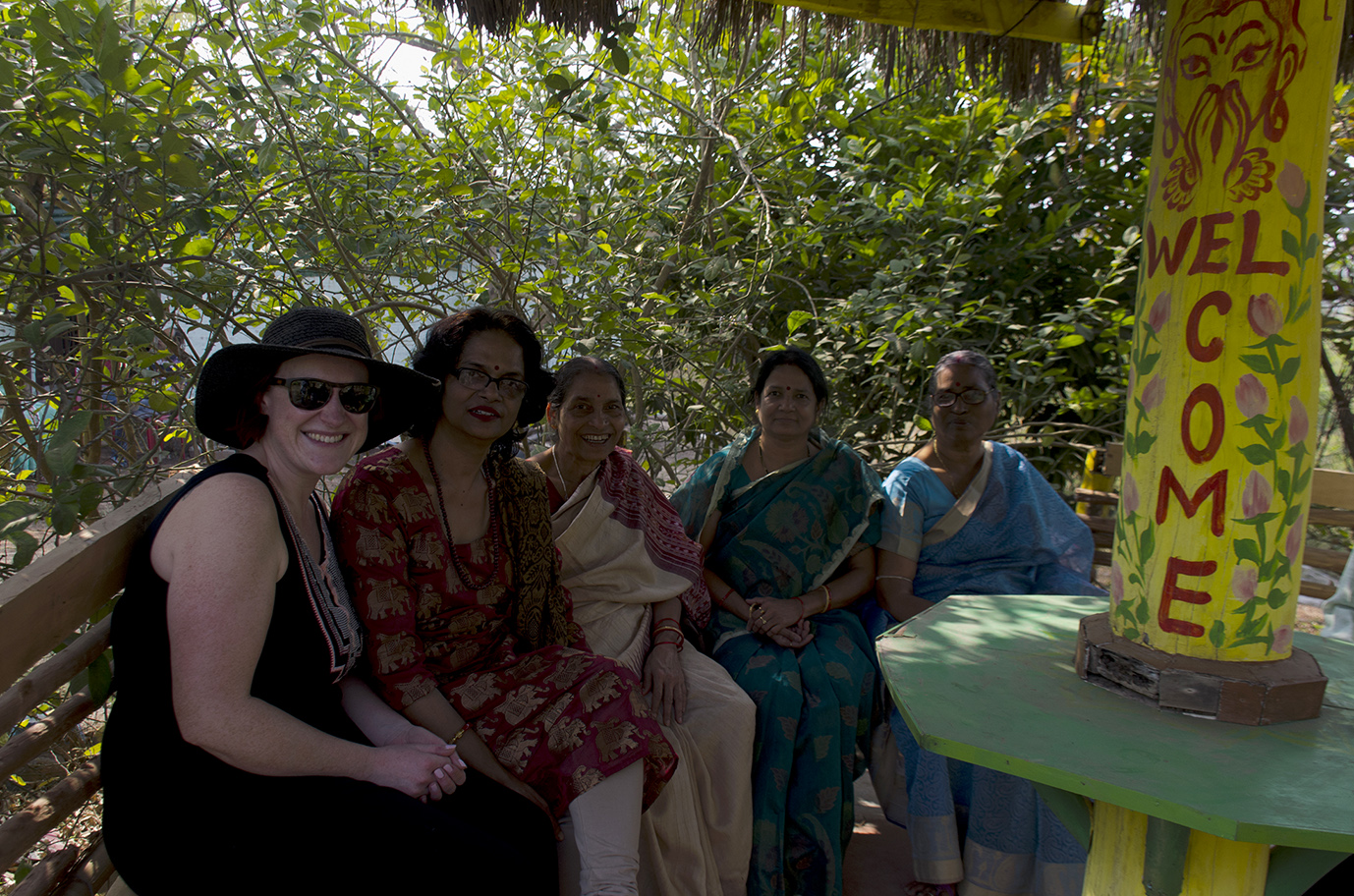
INDIA; Around Odisha in 15 days… Day 1 – Arrival by tuk tuk, the sacred cows, tea in the slum & monkeys overhead

My first experience of Asia begins with India; a place I have always felt a spiritual connection with, and for which I have harboured a desire to visit for as long as I can remember. Unsurprisingly, I have not been disappointed. I feel a slight envy of those people who travelled here in the 60s and 70s, people like my Uncle, who must have been unprepared and overwhelmed in every way, by the stark contrast in culture between India and the UK, which would also have been an even greater gap than today. For my generation, we already have an idea of what awaits us on a visit to this astounding country – social media, photography, film, books, all of these have painted a picture of the way that India impacts on the senses.
However, no book or film can ever prepare you for your first experience of India – mine was riding in a tuk tuk from the city to the suburbs. An onslaught of horns filled my ears, instinctively making me glance around to see the problem. There is no problem – every single car, bike, tuk tuk, beeps its horn as a matter of course. They use the horn in the way we would use indicators – to alert other traffic you are coming up behind, are about to overtake etc. They also use it in the same way we do, to express annoyance, to tell someone to move, to go faster, etc. The multipurpose use of the horn means that there is never a point at which someone is not beeping theirs. Add to this the Indian rules of the road… there are no rules! No seatbelts, no indicating, no hesitating. You drive and others move out of the way, this seems to be the basic concept. With what appeared to be a near miss every split second, I struggled to stop myself from incessant wincing and soon accepted my lack of control and went with it.
Freedom, said my host, you have a lot of freedom here. In the UK there are too many rules. To a degree, I agree with this – the West has almost achieved full evolution of the nanny state. You have to concentrate very hard in the UK not to break the law every 5 minutes. Rules abound: rules, rules, rules. When you come to another country such as this, you realise the joy of freedom from everyday rules. It’s intoxicating not merely because of the novelty, but also because of the simplicity, the weight of fear lifted. It is something we do not see because it is so ingrained in our society, yet I think it contributes significantly to our high levels of anxiety and depression. To live in a constant state of fear as we do, always watched, with someone waiting for us to break the rules. It’s stifling to say the least. You feel that in India, a lifting of the spirit – not merely because it is a spiritual centre (which you instantly feel to your core, too) but from the sense of freedom the society affords its people. The argument against this is obvious, with more rules comes less accidents etc. but the weight of the fear impact on our generation and the next is already beginning to show, with higher levels of depression, anxiety and suicide than ever before as young people feel trapped and overwhelmed by the burden of fear society places on them.
Anyway, I digress. But I digressed because freedom from incessant public restriction is a significantly noticeable aspect of life here. Another is cows. Cows everywhere. EVERYWHERE. You cannot walk for 100 metres without seeing at least one cow wandering around. They don’t belong to anyone, nor do they seem to get looked after by anyone in particular. They fend for themselves and no one takes any notice of them. They are as much a part of life here as rain in England. As a foreigner, this charms me no end, a fact which the Indians find hilarious. Sitting in a house, a cow walks past the door. Walking along, a cow trundles past. I turn in amazement and delight as these noble animals are treated as equals, in stark contrast to our brutal farming and consumption of them in the UK. Although they are mostly ignored here, they would never mistreat them. The Hindu cow is sacred, and it is clear that all animals are respected in this mostly vegetarian country.

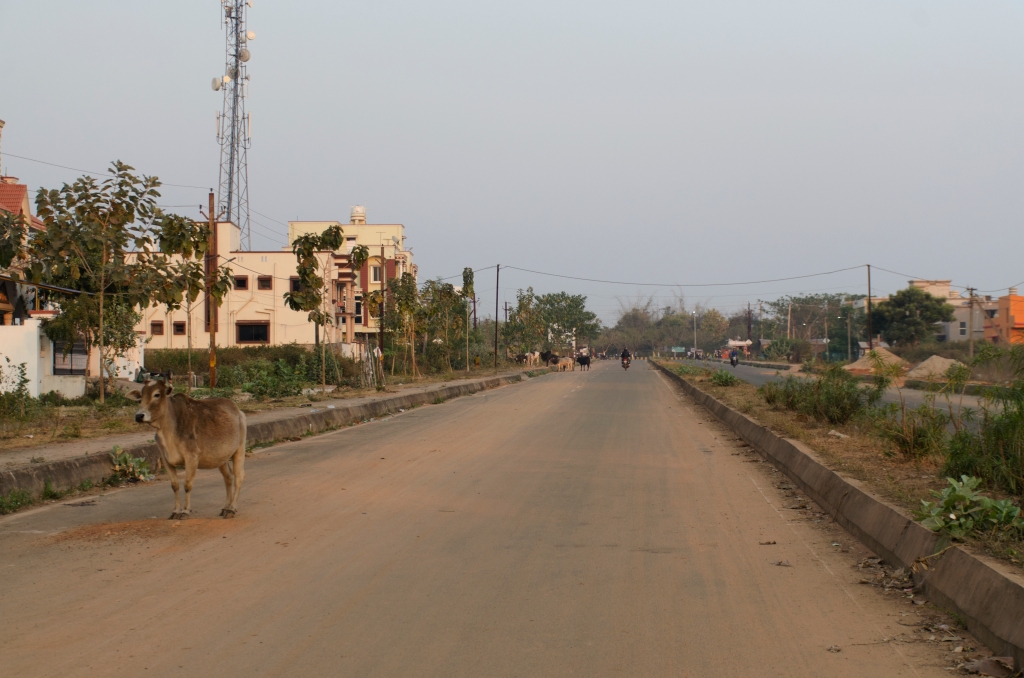
So, I arrived – my host Ashis took me by tuk tuk back to his home and art residence in Bharatpur on the outskirts of the city of Bhubaneswar. The traffic and the cows were my first major introduction to the contrast of life in India to that of where I had arrived from, just outside London. The residency, at Kalanirvana, is held at a beautiful house in a fairly rural area, quiet except for the ongoing sounds of building during the day. Construction here is in full swing, every other house is being built and workers (men, and women in full sari) trek up and down stairs all day long carrying 8 bricks on their heads at a time, or bags full of sand in 28-degree heat. I am in awe. They grin at me as they pass, and I grin back. Namaste I say, and they nod with a grin. I am a novelty here; being particularly fair skinned I stick out like a sore thumb and have had a taste of celebrity status as I am often asked to pose for photos with locals, or encounter those who ask me to take photos of them, and who beam in delight at me as if I am an alien species. I have had very little animosity, perhaps a handful of looks, but these could probably be construed more as a confused frown than hostility. Interestingly, more than a few children, particularly the very young, toddlers, have squirmed away from me in fear. The fear of the other, which they do not yet understand, being too young to have learnt of other cultures by TV and schooling. I found this fascinating, as in the UK, with our now very multicultural society, the vast majority of children will come across other skin colours and facial types regularly from a young age. I do not remember my son ever reacting like that, as he has seen a variety of faces since he could first make out a face at all.
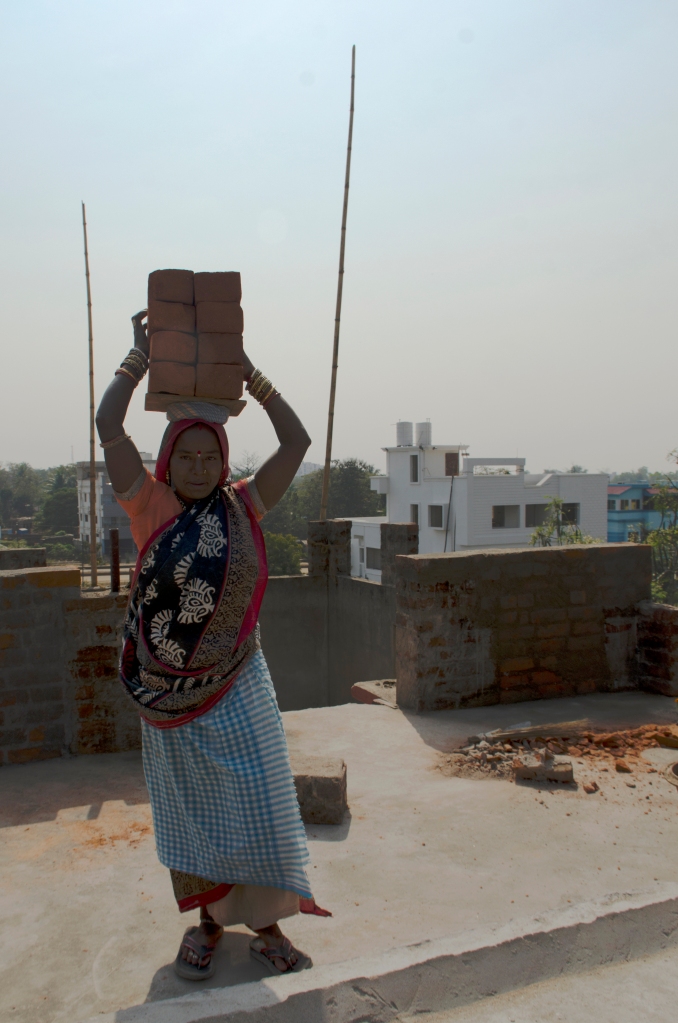

The day I arrived, the previous resident artist Paula, a musical performance artist from New York, was leaving. Luckily, I got to meet her, and even more fortunately, was able to join them on a visit to the local ‘slum’ village to distribute solar lamps she had been given by a company as part of her project whilst here. Before we left, she gifted me a number of beautiful treasures from her trip – a red dupatta, for which she gave me a lesson on the many ways to wear, a pile of collected local handmade paper and a US sci-fi book of short stories to help if the jetlag kept me awake. I was bowled over by this show of generosity for someone she had met only moments before. Her husband Richard, another New Yorker and a high-profile pianist, joined us, despite being rather seriously unwell after some suspect food in Calcutta.
The four of us walked to the village, guided by Ashis, who, being a local, is well known in the area. His father was the first person to build a house in this community and, employed at the time in the power department of the government, had the connections to ensure that roads were built, and electricity installed. More people in turn followed, and the neighbourhood is now busy and thriving. The high-profile nature and longevity of his father in the area means he knows the local people well, which makes for useful security and access to all areas in the local vicinity. On arriving at the ‘slum’, we were greeted by children playing with monkeys in the street. Monkeys which took off sharply when we arrived, aware perhaps of our foreignness, as they took to the high walls to observe us from above. Monkeys in the wild is a sight I have never seen, and a thrill which infuses the soul with happiness.
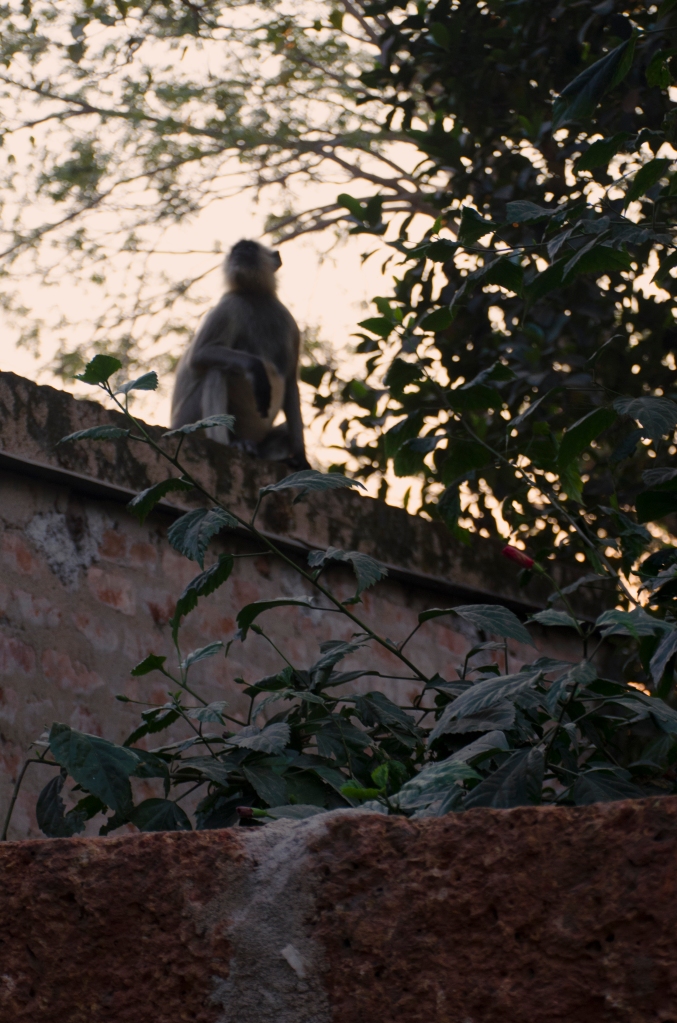
We were invited into the house of Laxmi and took off our shoes to enter – this is standard practice here, in houses always, and often in shops too, shoes off and left outside. It is a seemingly small thing, but yet another practice which stops me short in my own automatic behaviour, to challenge my views of how society works. Although a respectful and cordial social norm, an equivalent in England is not at all practical due to the weather – in minus 5-degrees who wants to be removing shoes and socks outside every time they go in and out of somewhere?!
Entering Laxmi’s house, we were greeted with delighted smiles from the adults and suspicious frowns from the beautiful wide-eyed children, which made me grin at them even more. Paula presented them with her gift of the solar lamp and explained to me that when the electricity goes off in the area (which is a regular occurrence) the slum is without power. When it is dark, that means the teenagers cannot study their schoolwork, no one can cook or do work around the house, and any job which needs to be seen to be completed, is unachievable. The solar lamp will make a huge difference to the practicality of their household. We were offered beautifully small, delicate cups of delicious sweet tea, which I managed to drink despite feeling rather sick from jetlag, having only arrived that morning. We then visited a neighbouring house and were offered more tea and snacks. I ate as much as I could, so as not to offend, and enjoyed the exquisite tastiness of a local banana – a third of the size of the ones we get in the UK, packed with ten times the flavour.
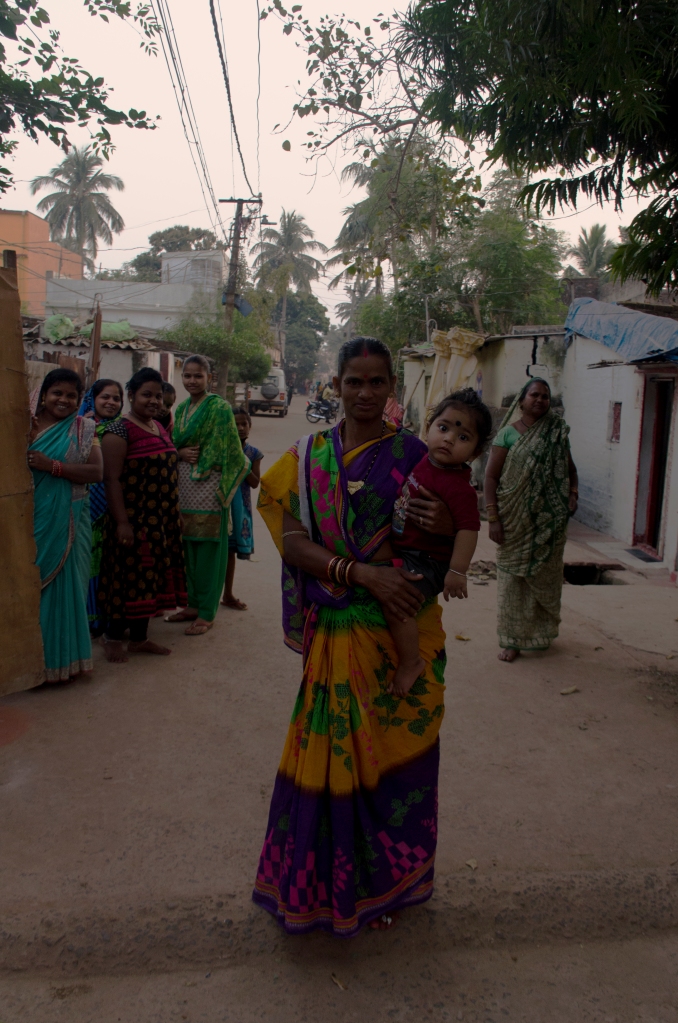
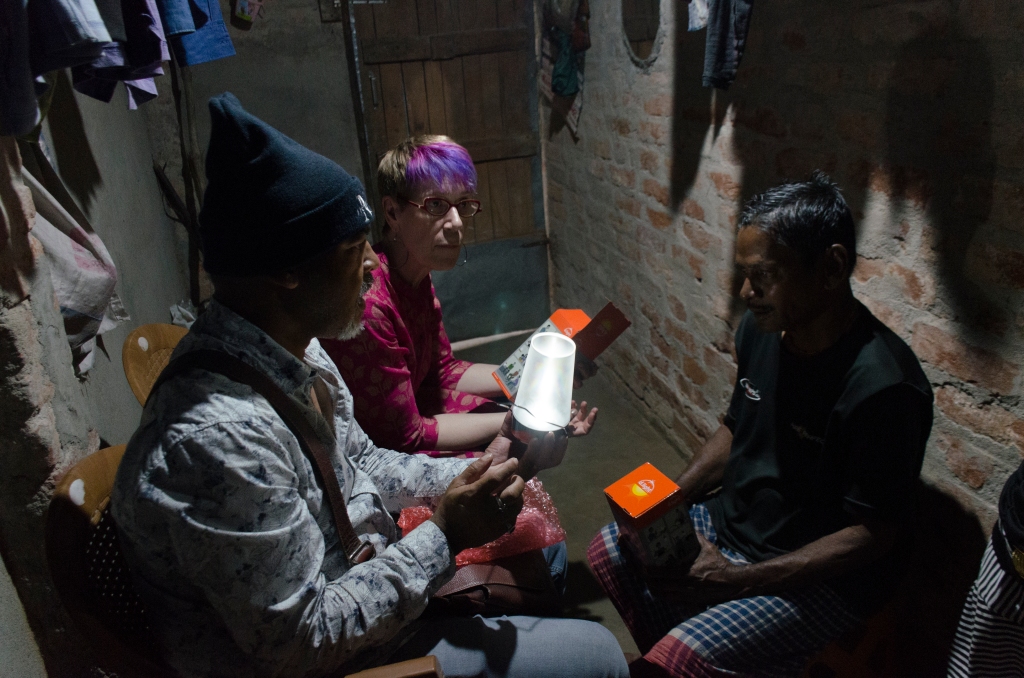
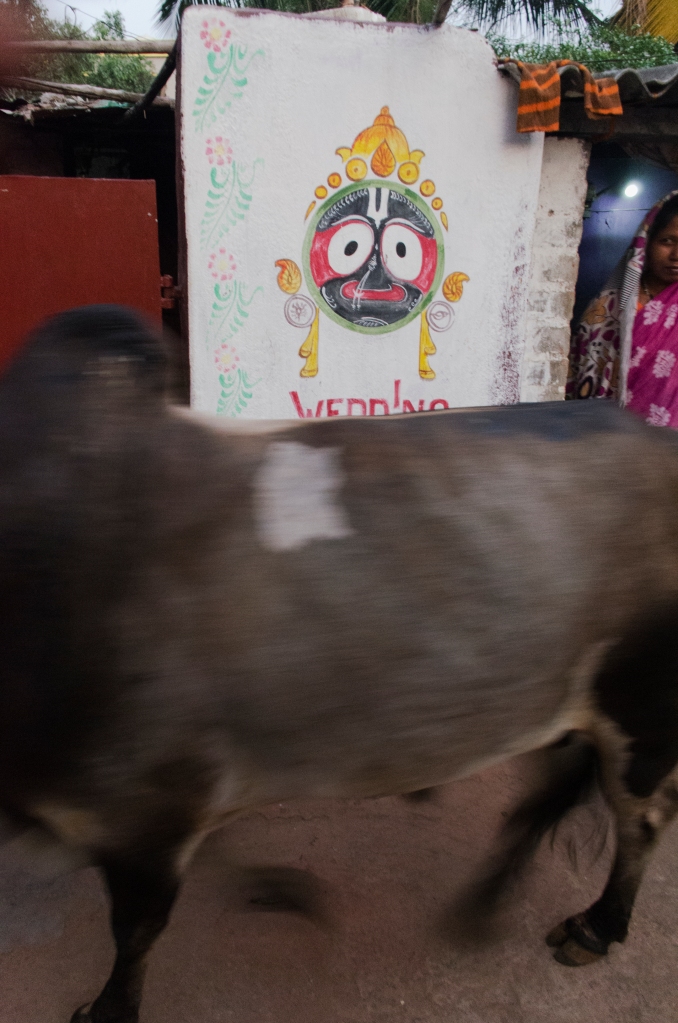
As we left, the sound of drums and chanting filled the air. That’s the Bajan, Ashis said, come, I’ll show you. We walked through the streets to a small temple, where a machinated drum played a fast, repetitive beat as offerings were made to Shiva. Ashis pointed out that every house has a small altar at the front, no matter the status of its owner, where a candle is lit at dusk each night and communal thanks and prayers are given to Shiva and other Hindu gods. The beat of the drum was intoxicating and hypnotic, and I learnt that the Bajan is a daily occurrence, a form of public call to prayer.
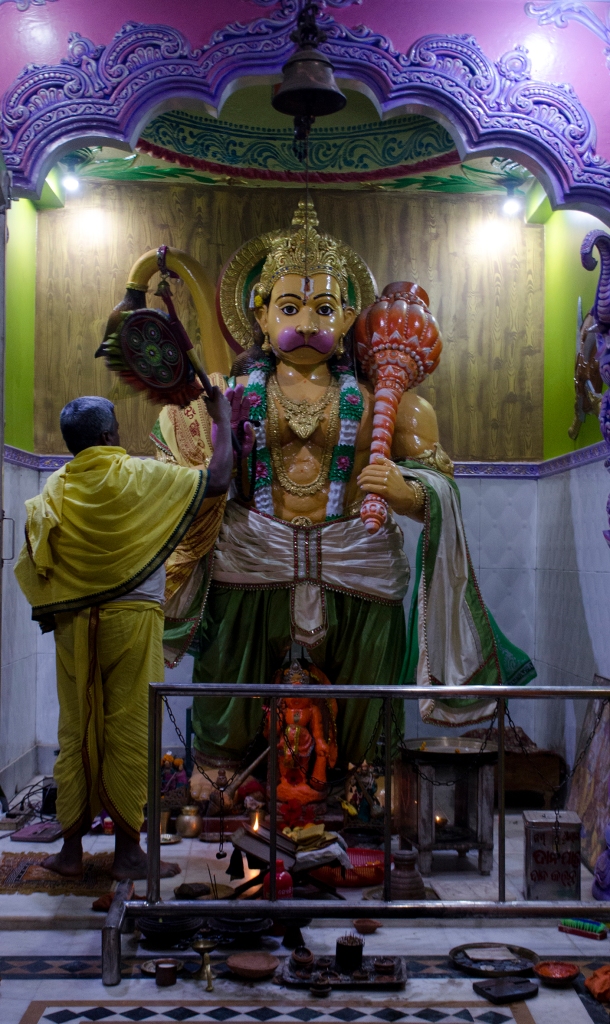
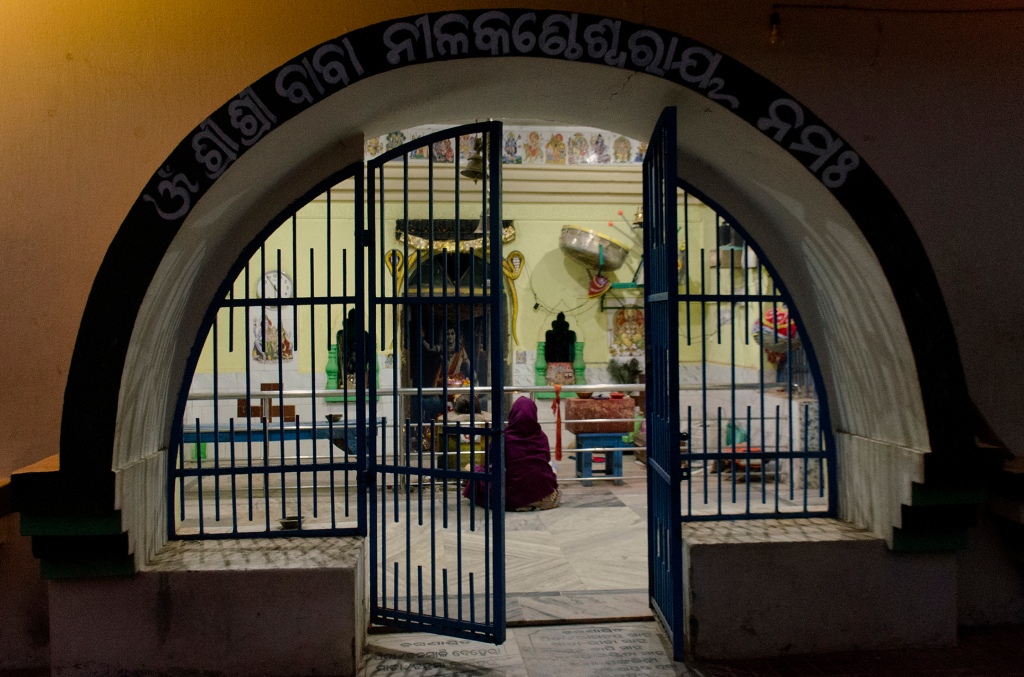
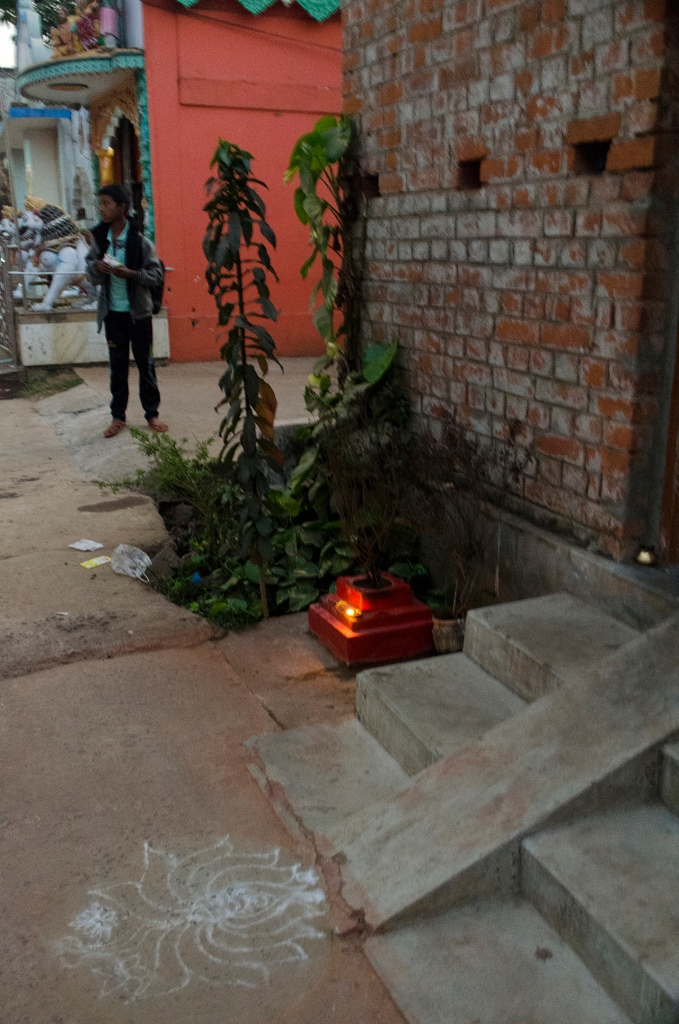
After an overwhelming first day, my first impressions of India are nothing but positive. As I always expected, this place speaks to my soul and feels as natural to me as if it were home. It is a place of acceptance, of freedom; of simplicity but enthusiasm and drive, of overpowering colour and sound and smell. It’s everything you think it will be and much, much, more. I can’t wait for tomorrow….

Underground Vienna

Camera at the ready, eyeballs on the lookout – yet my first day in the city of Vienna yielded no palpably exciting images, despite an abundance of beauty and grandeur of aesthetic spectacle on every corner thanks to the legacy of the dominating Habsburg Empire.
There was plenty there for everyone, with unending streams of tourists lining up to snap the top tourist attractions, and photographers such as my sister (whose speciality is in photographing people) lapping up the melee of crowds surrounding said tourist spots.
As for me, I felt somewhat at sea photography-wise. My mood wasn’t brilliant, my stress levels were high, and I struggled to find that sweet spot when you just know a shot is working.
Until, that is, me and the family embarked upon an unexpected post-dinner walk down to the beautiful Danube (well, a tributary – a damn big tributary actually). The riverbank hit my sweet spot. Street art and graffiti as far as the eye could see lit by low, coloured lights and punctuated by stark streetlamps in places. This was a bit of me.

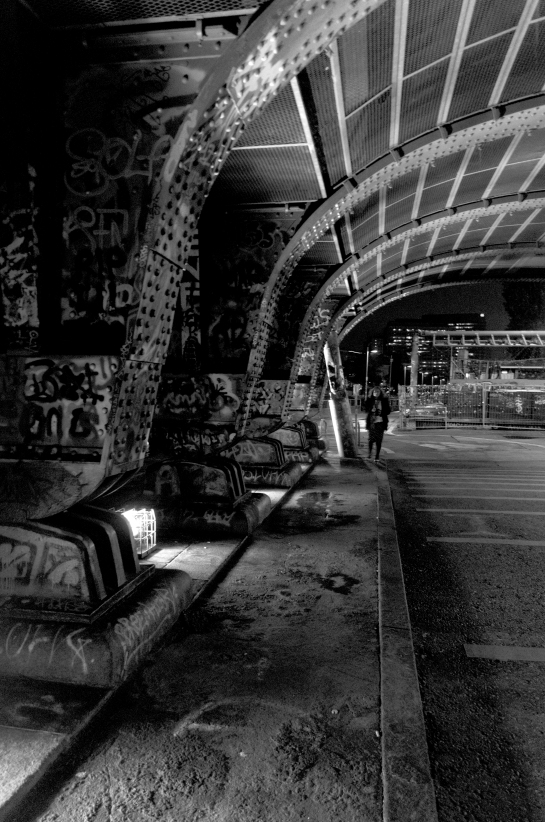
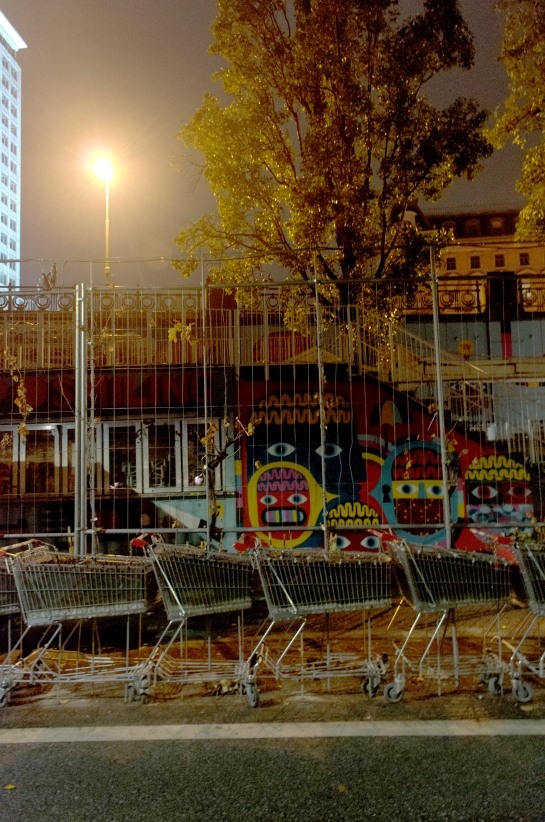
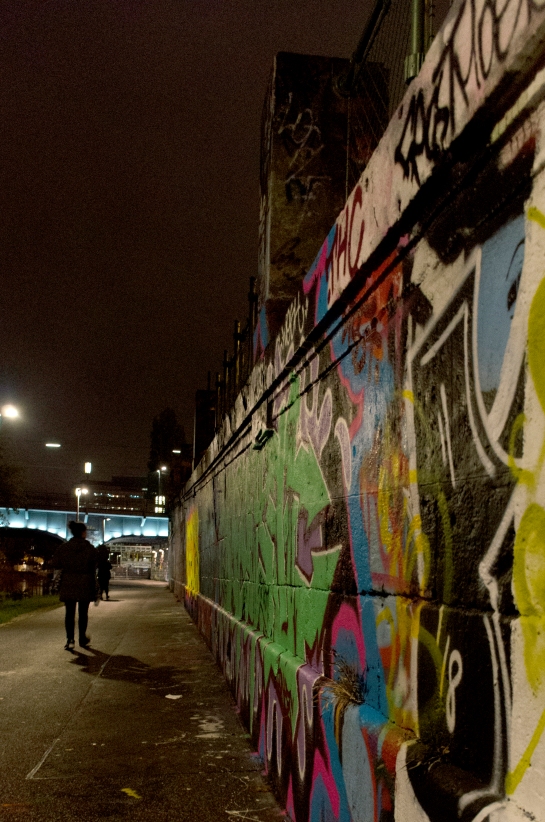
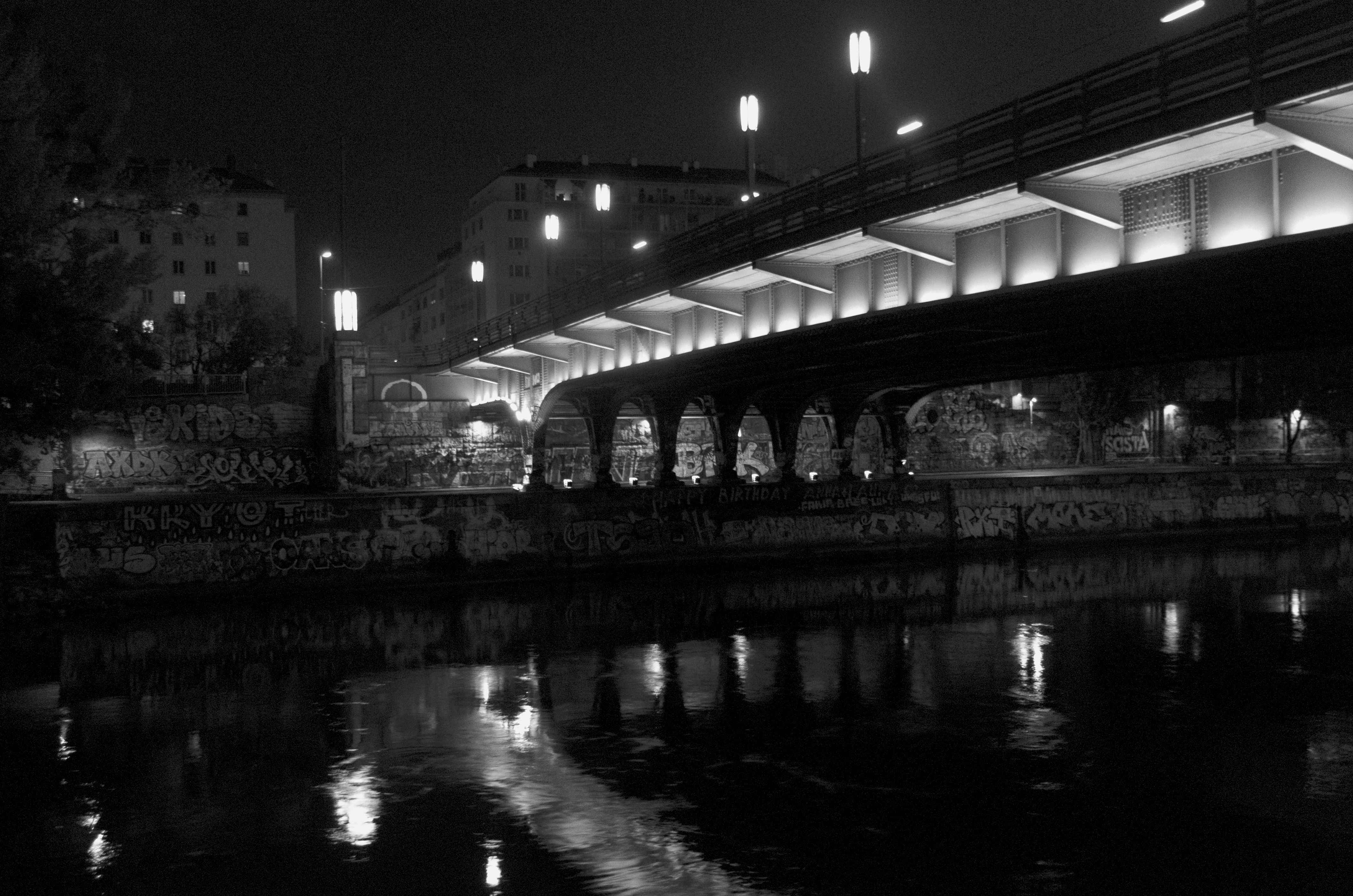
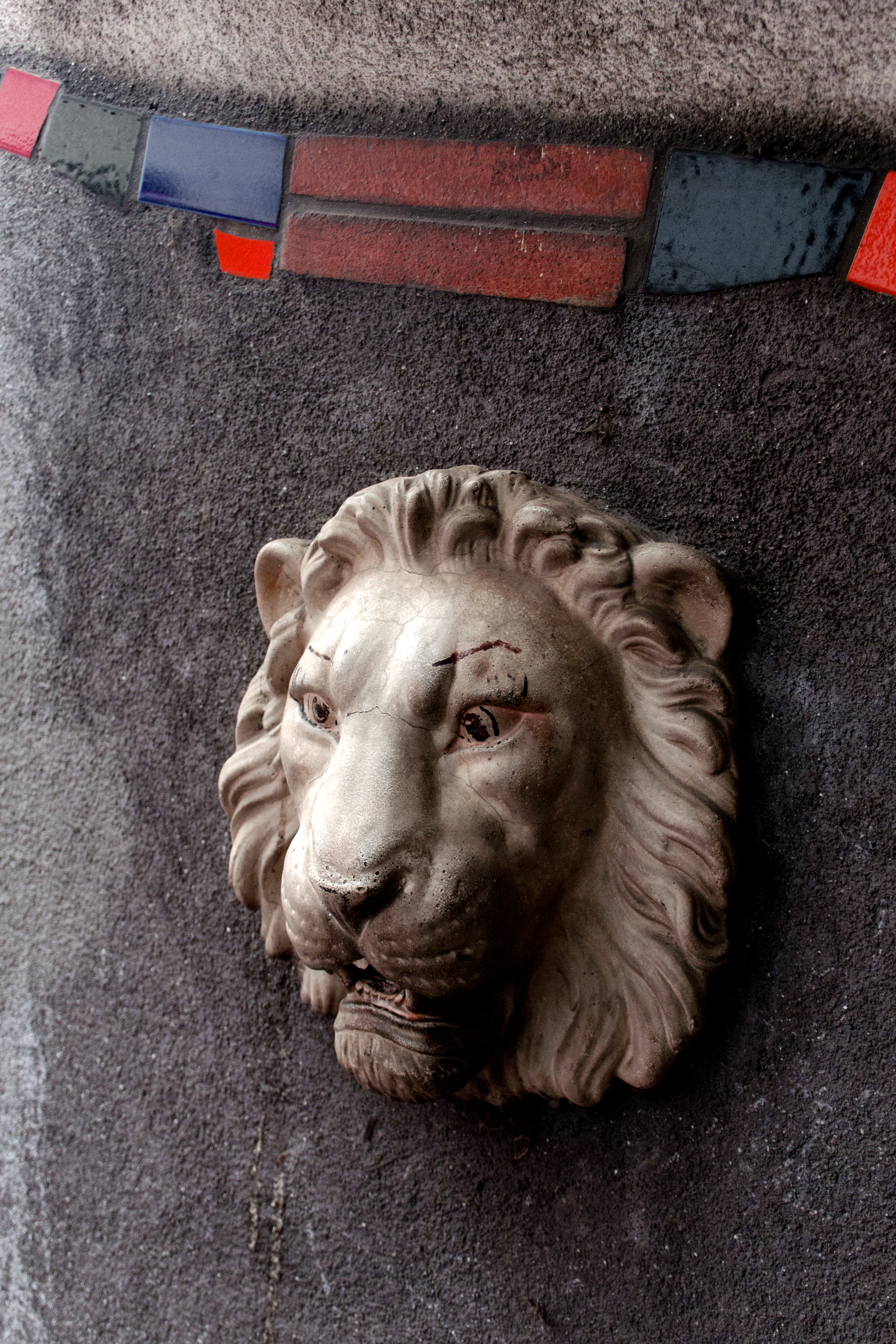
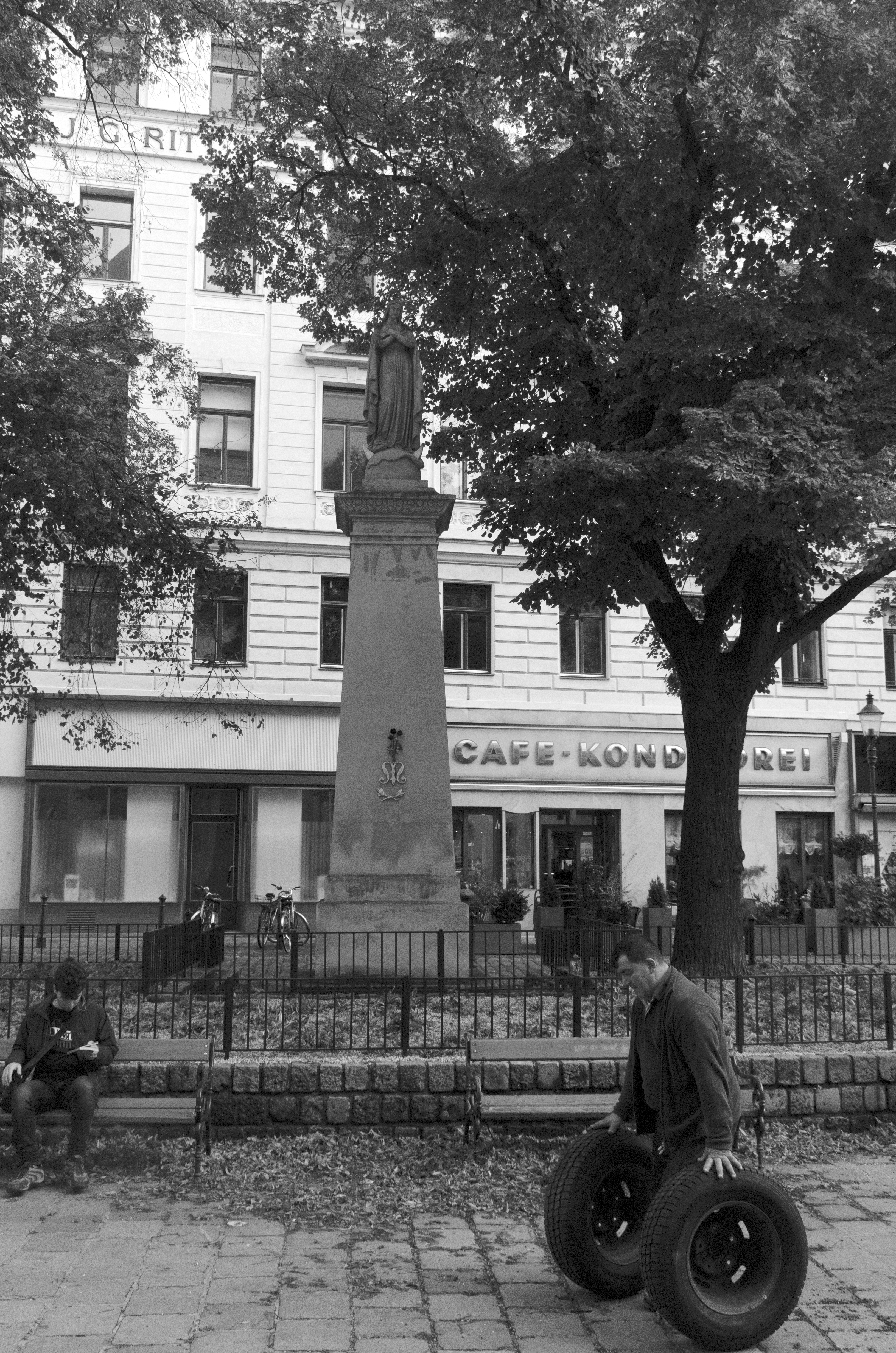
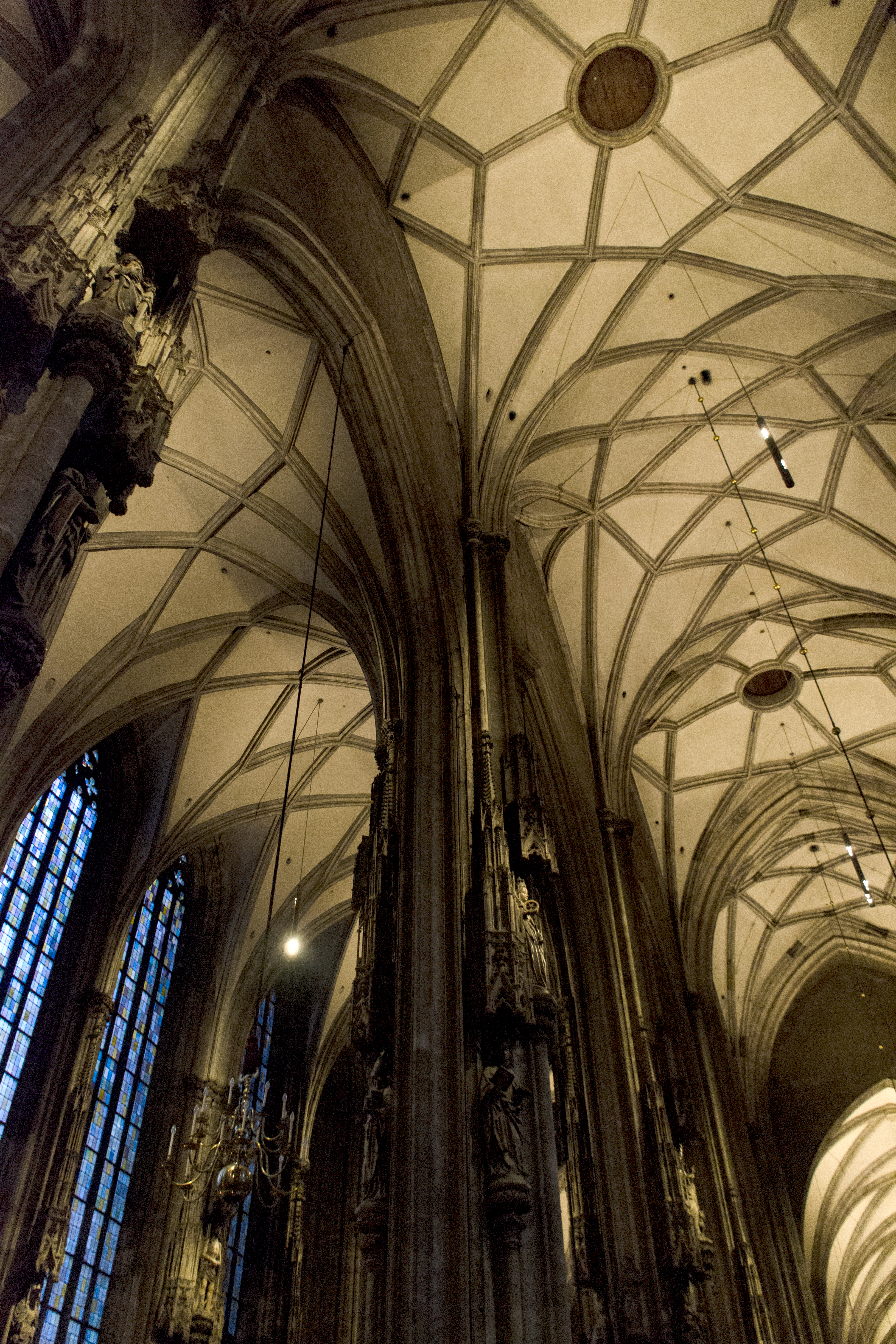
Floating
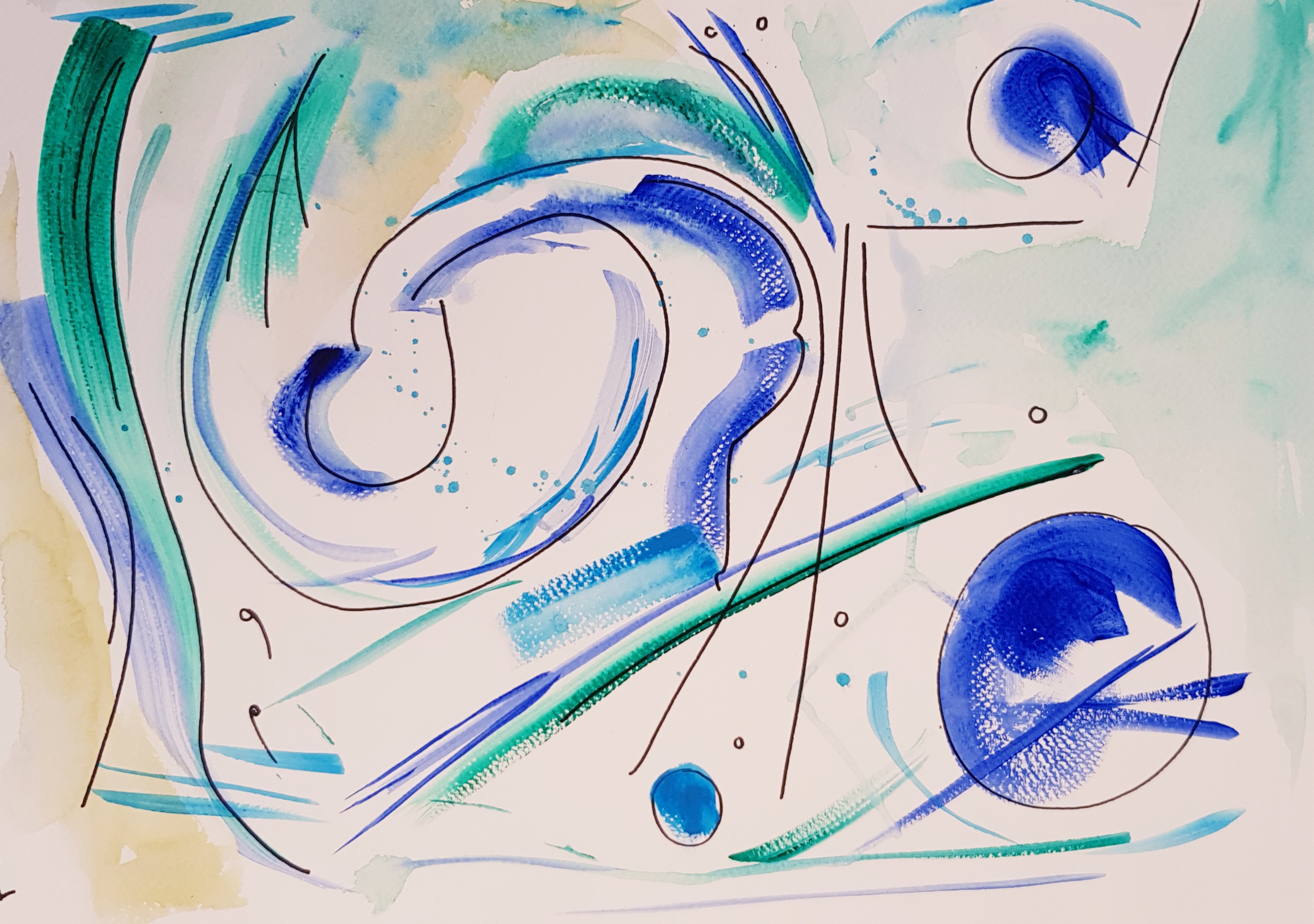
Latest painting…
Pen and watercolour on paper 40×30



